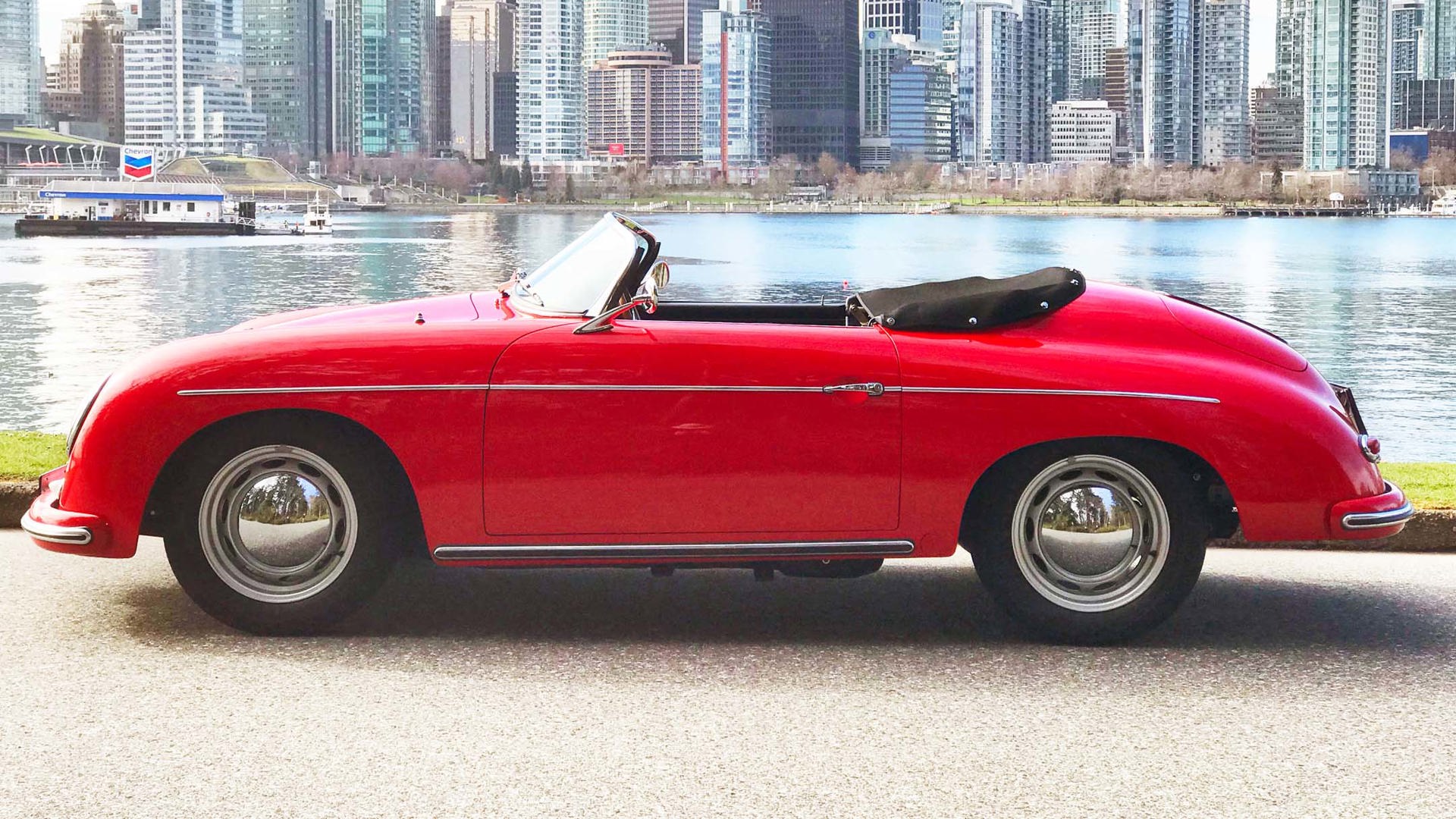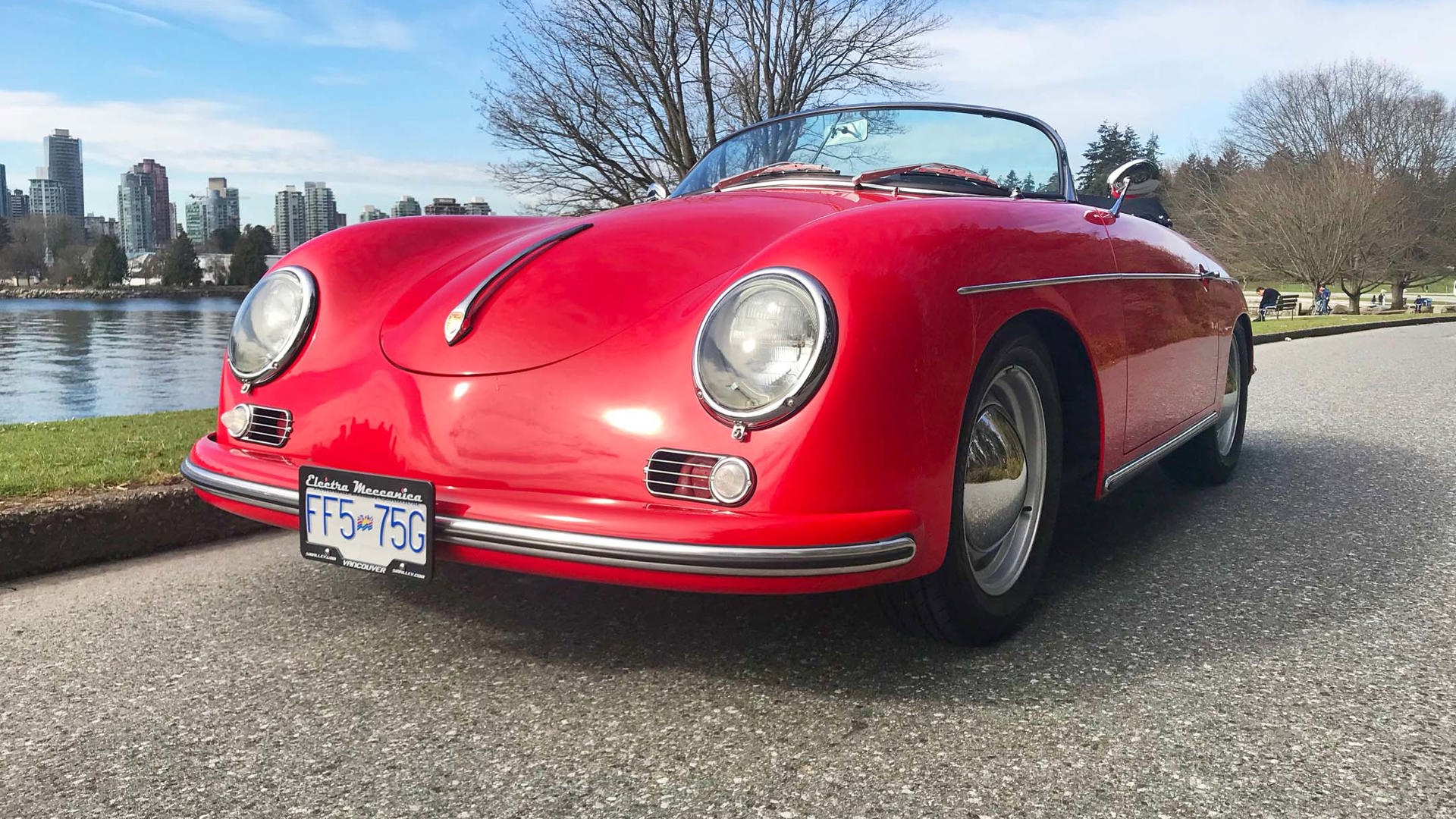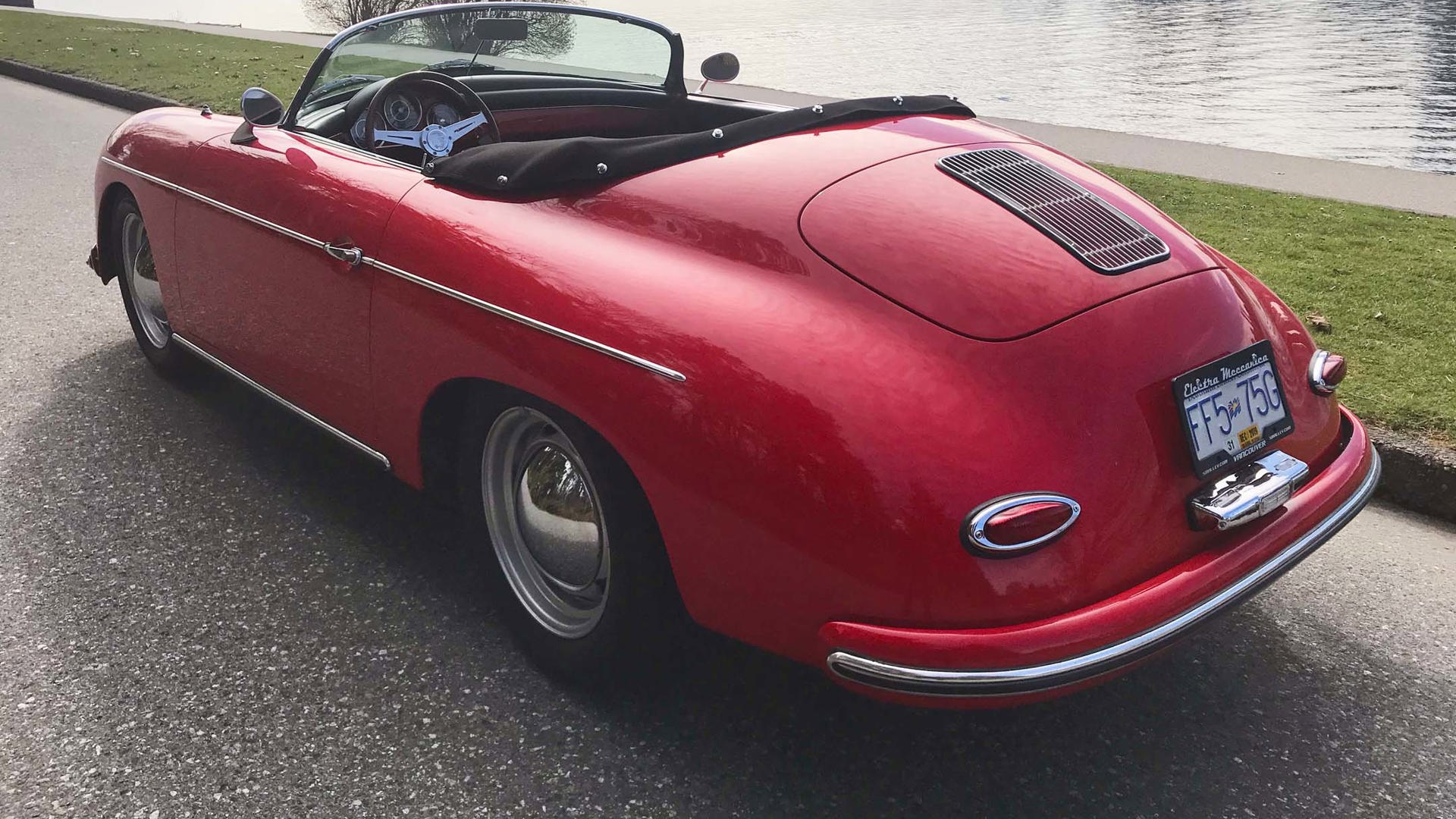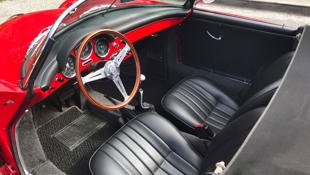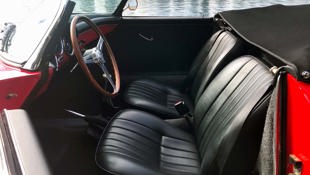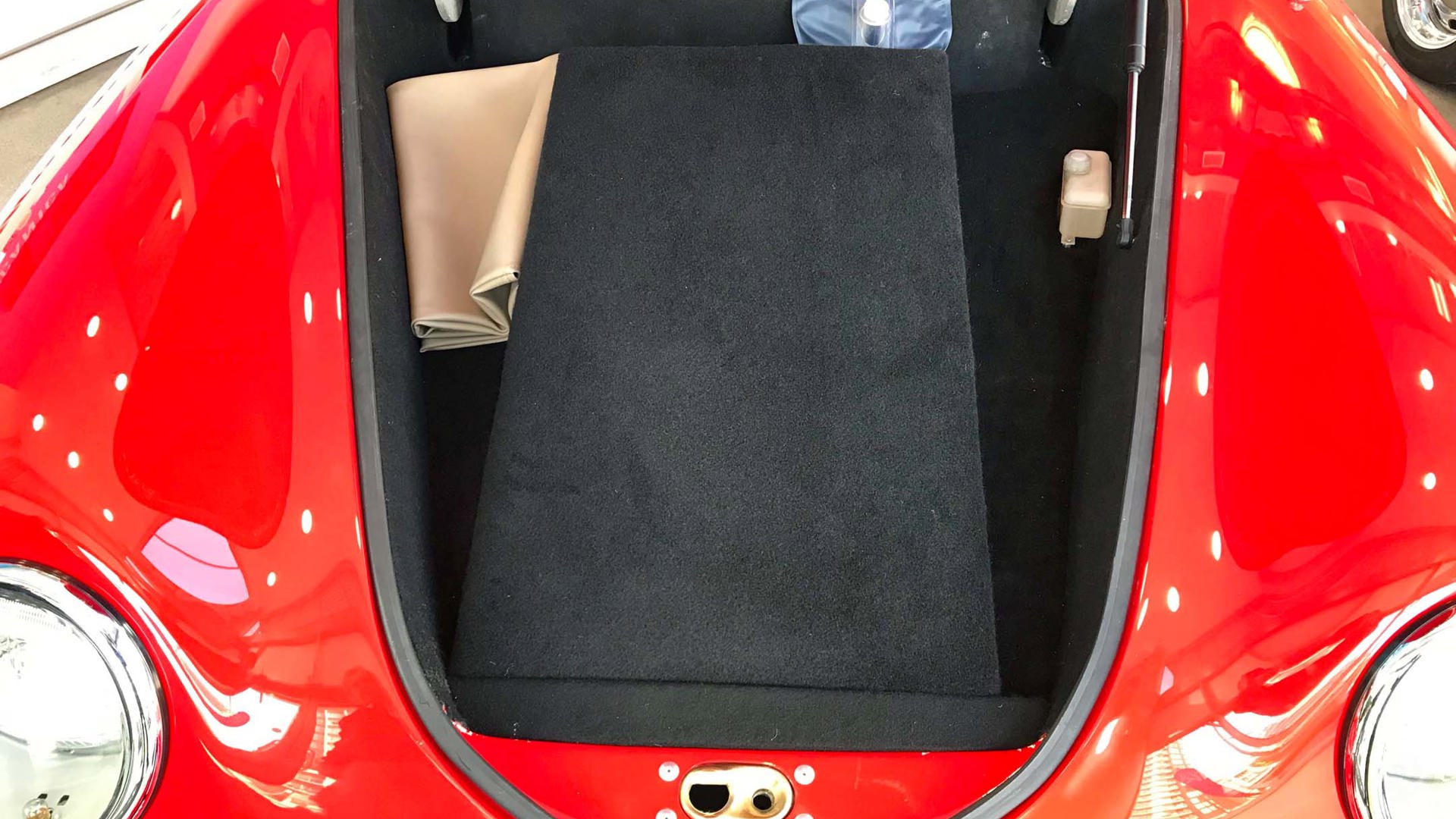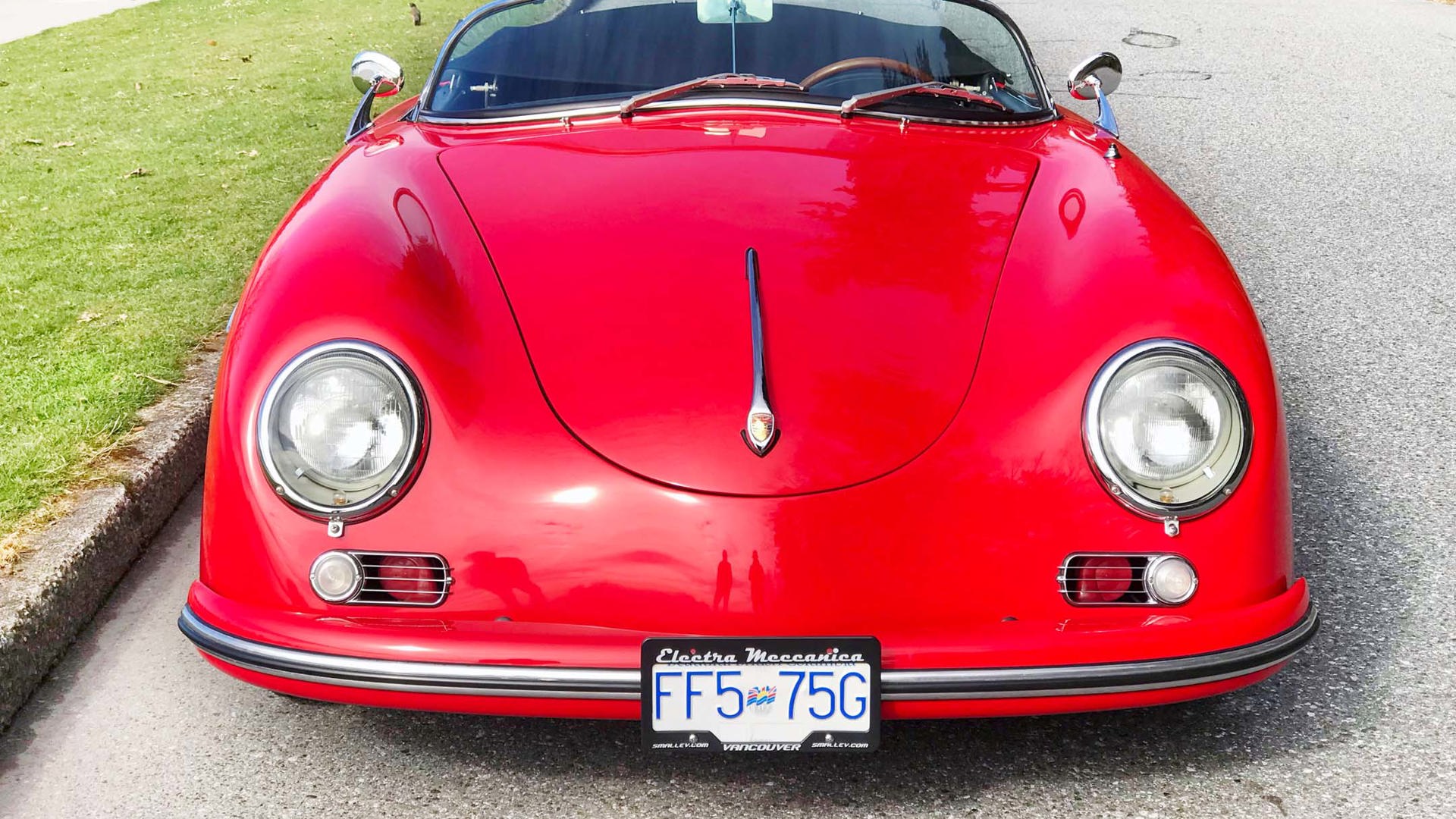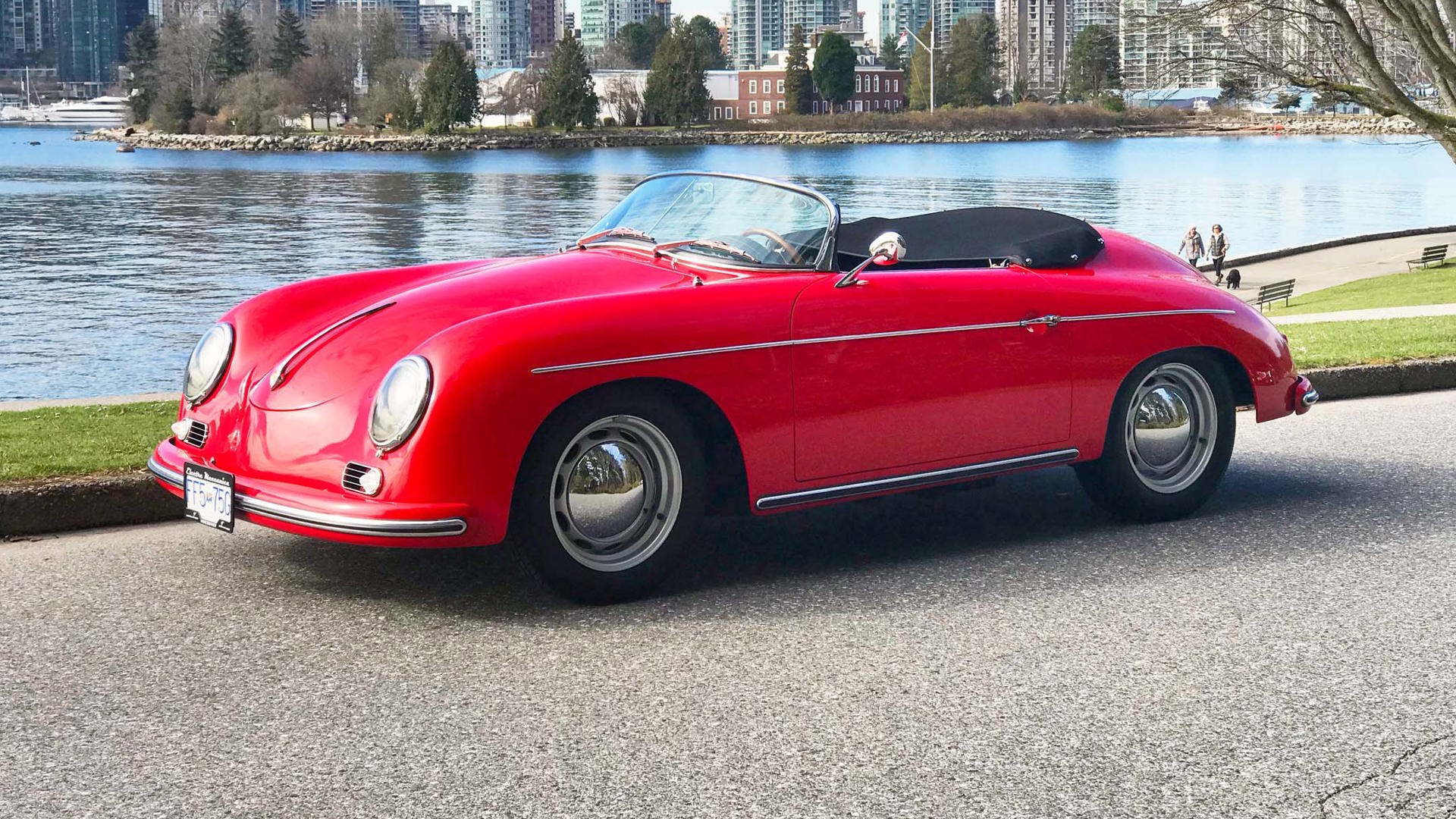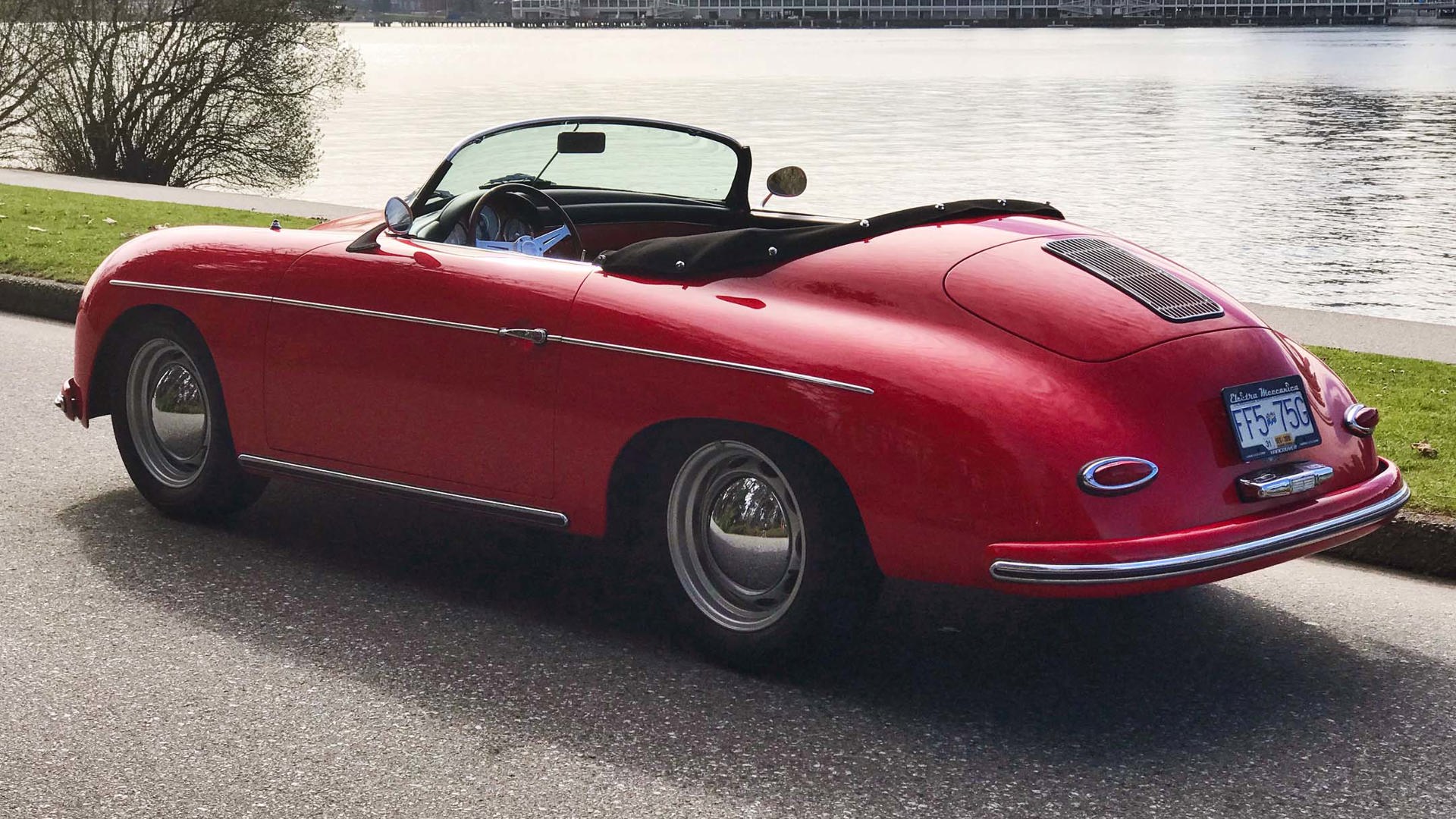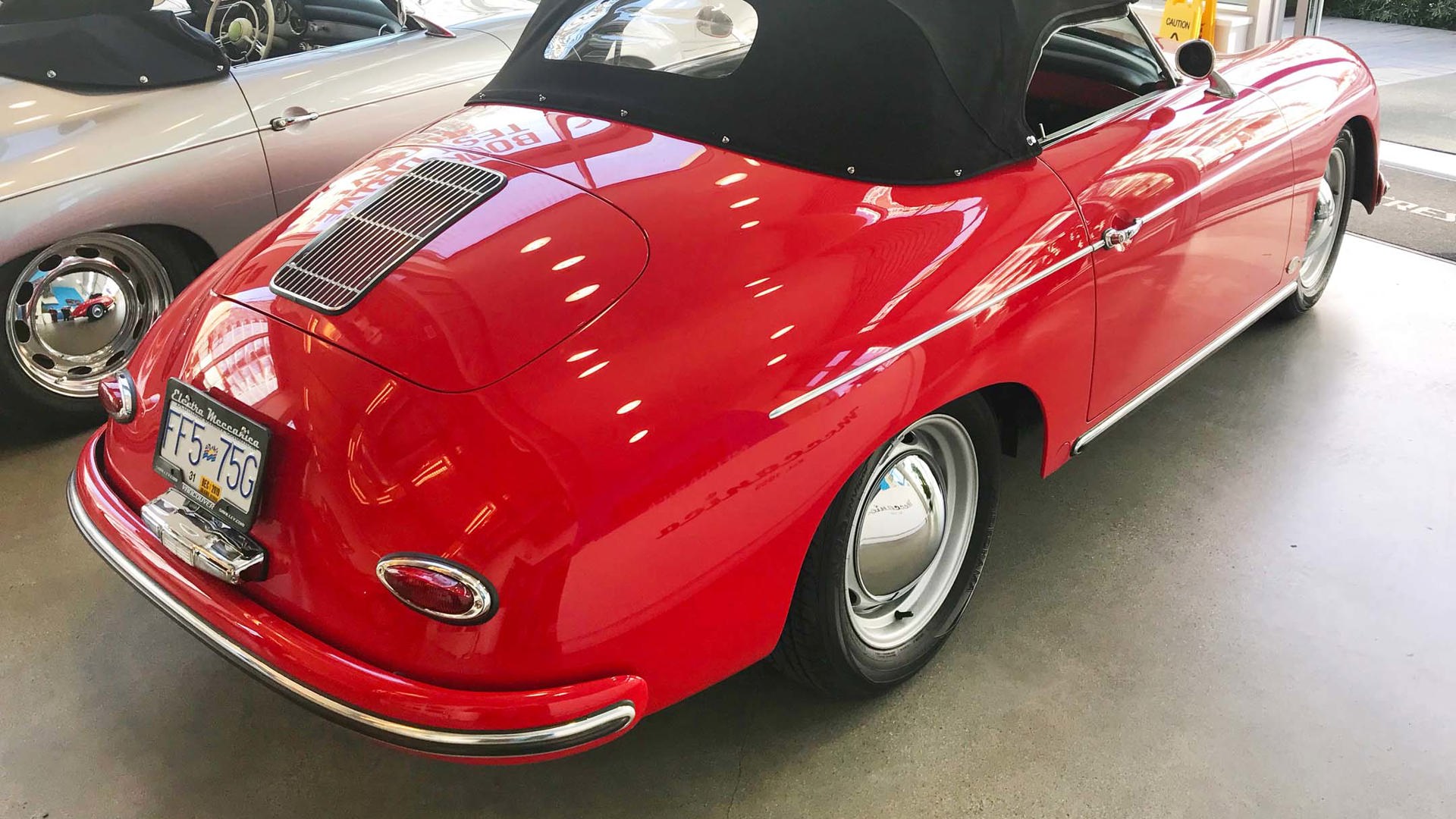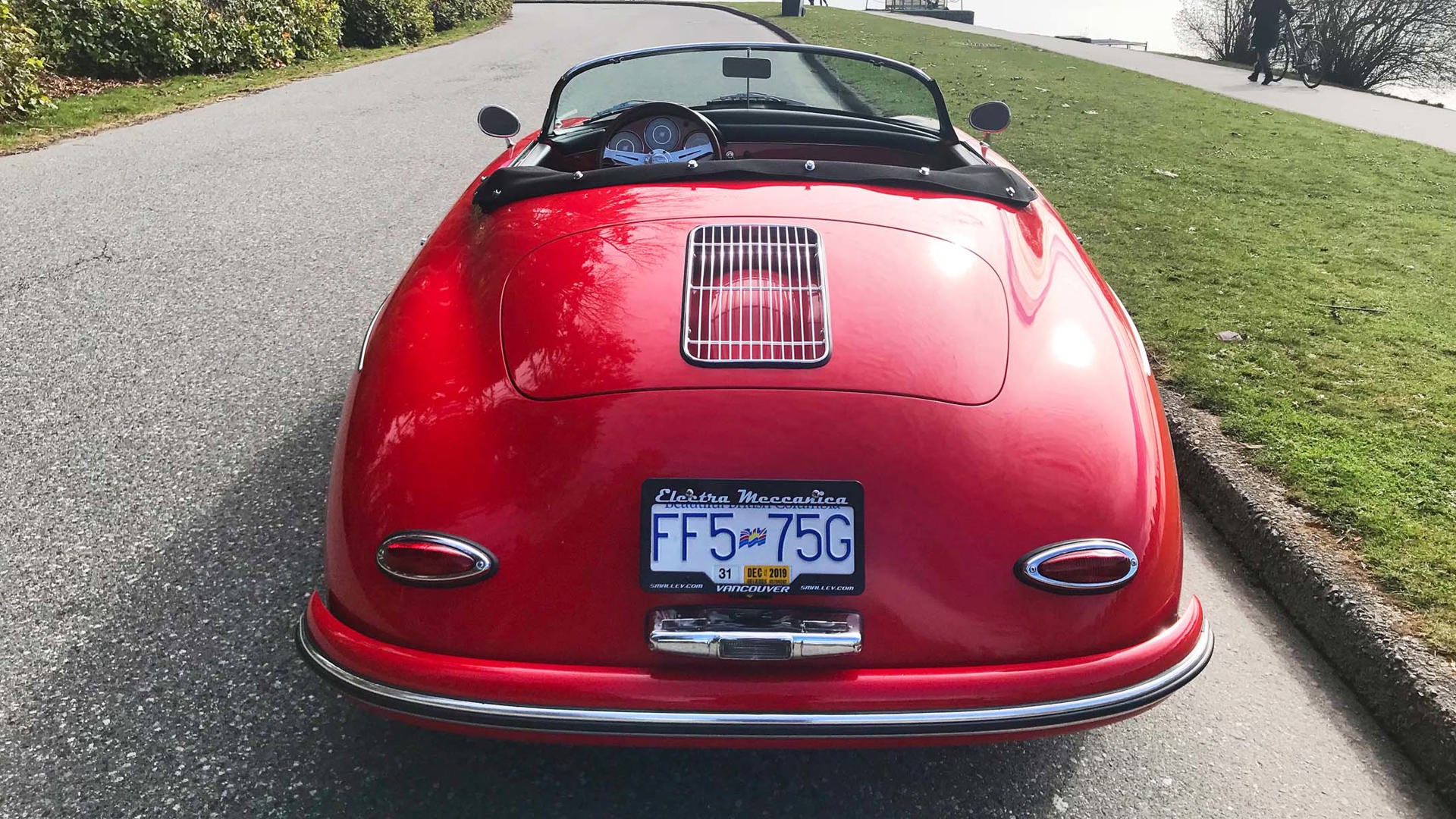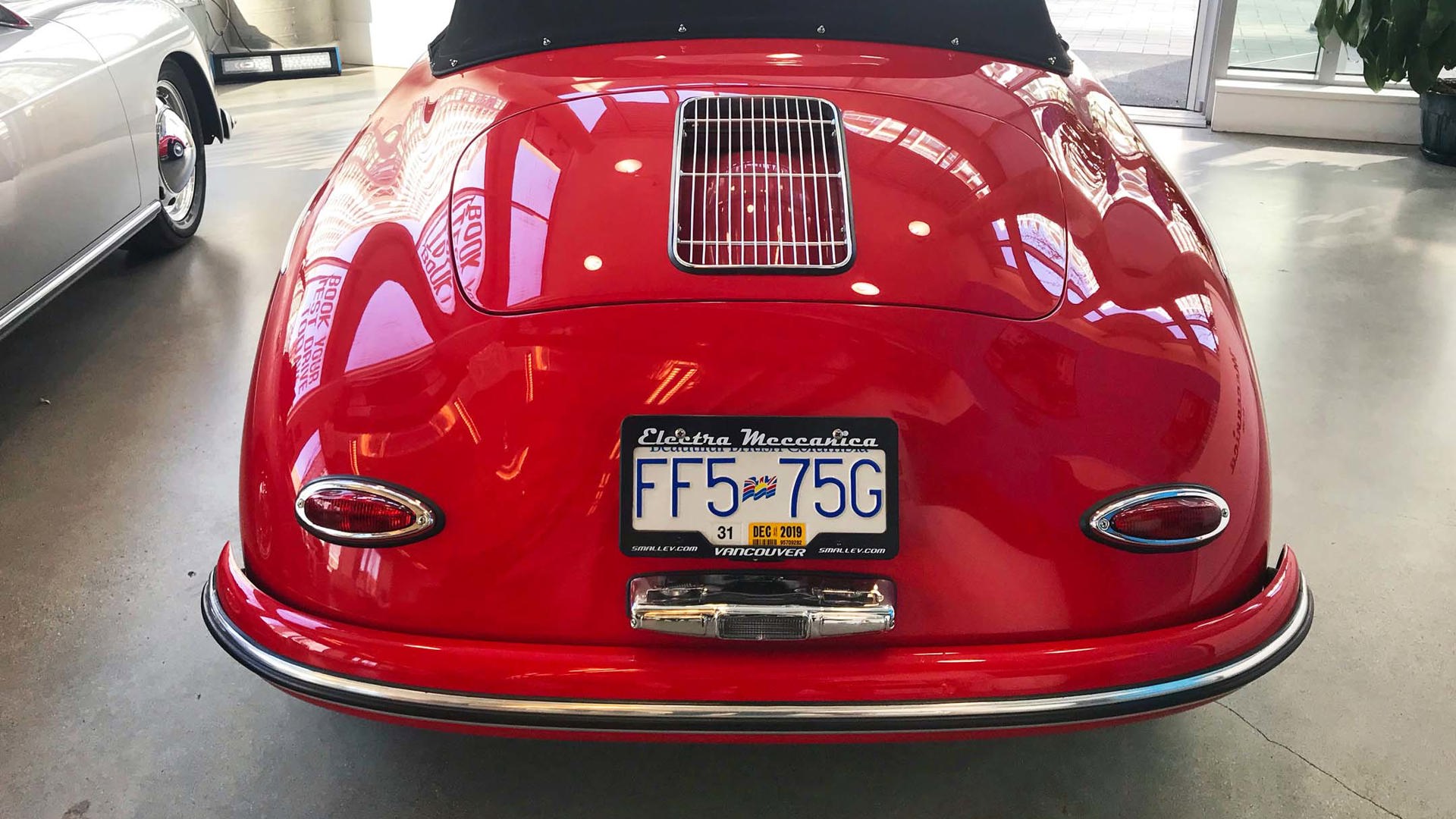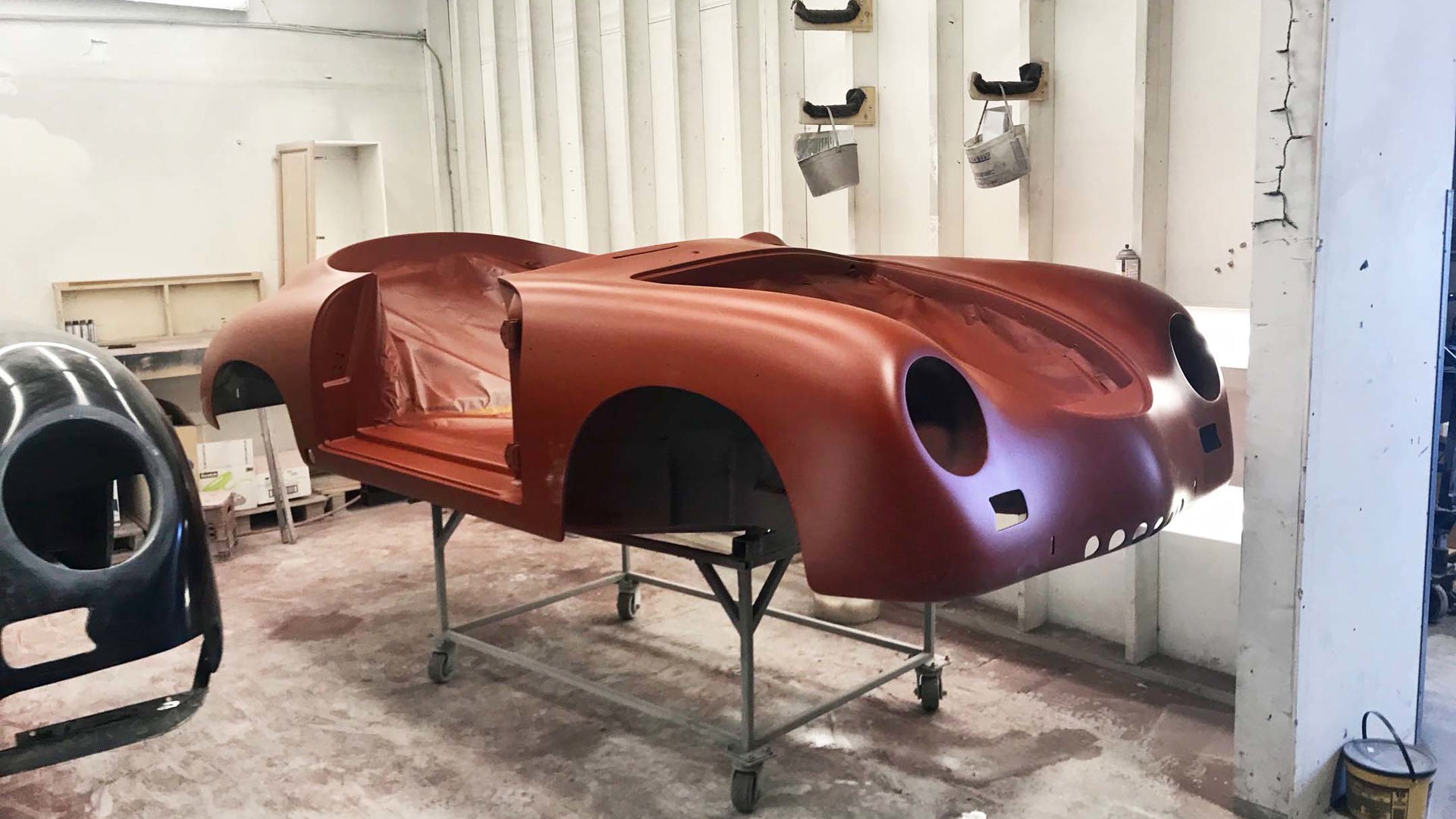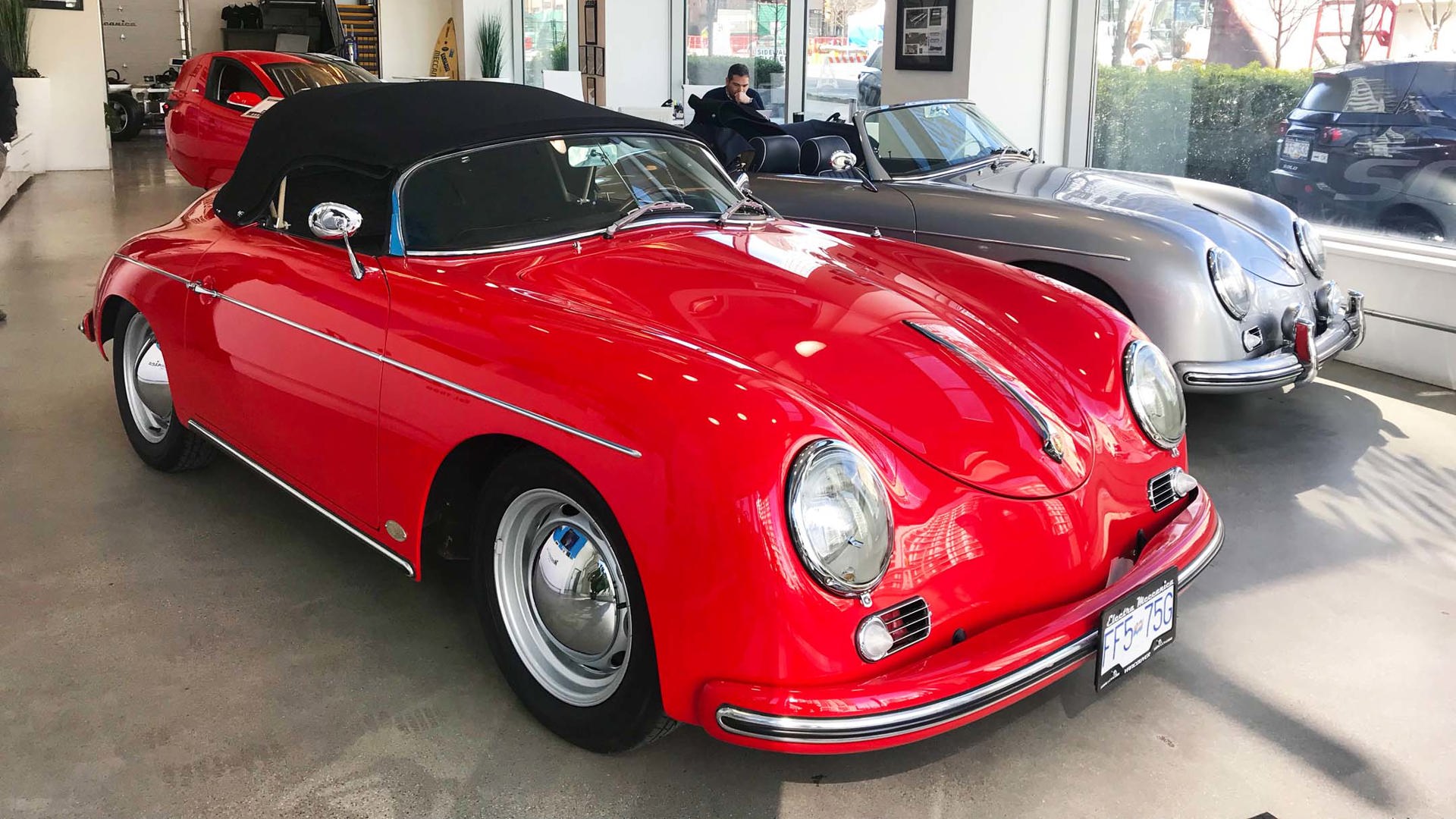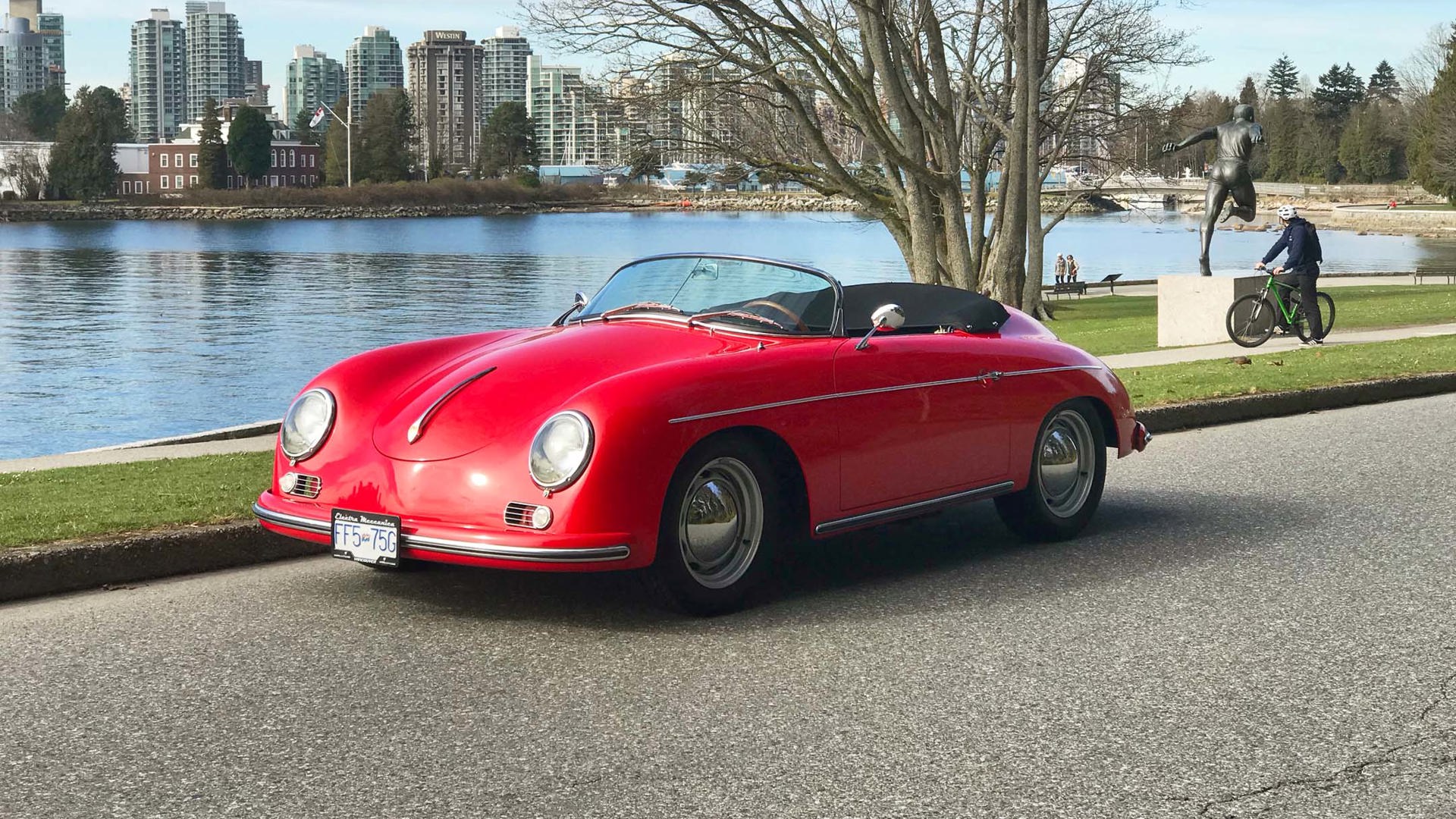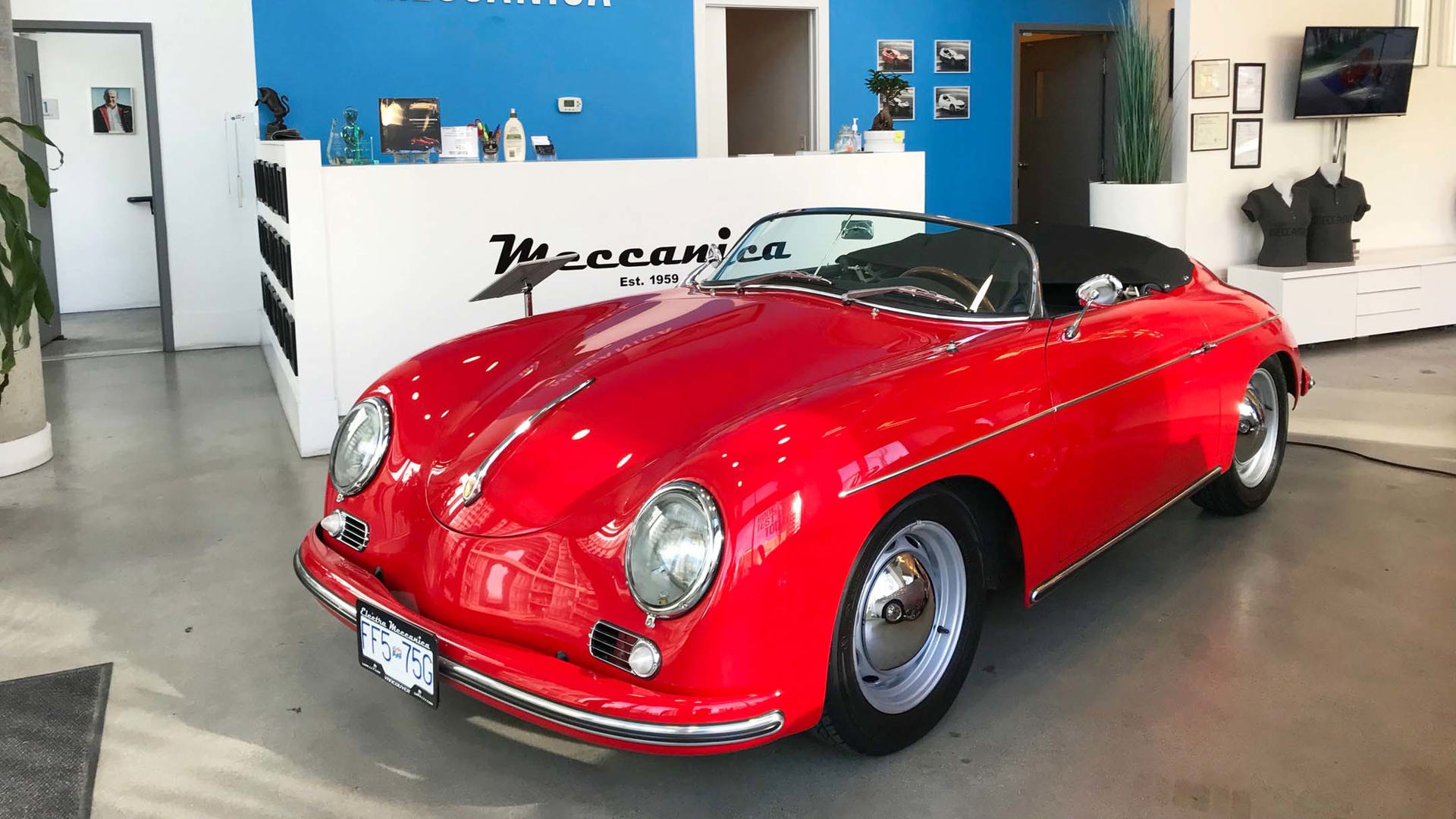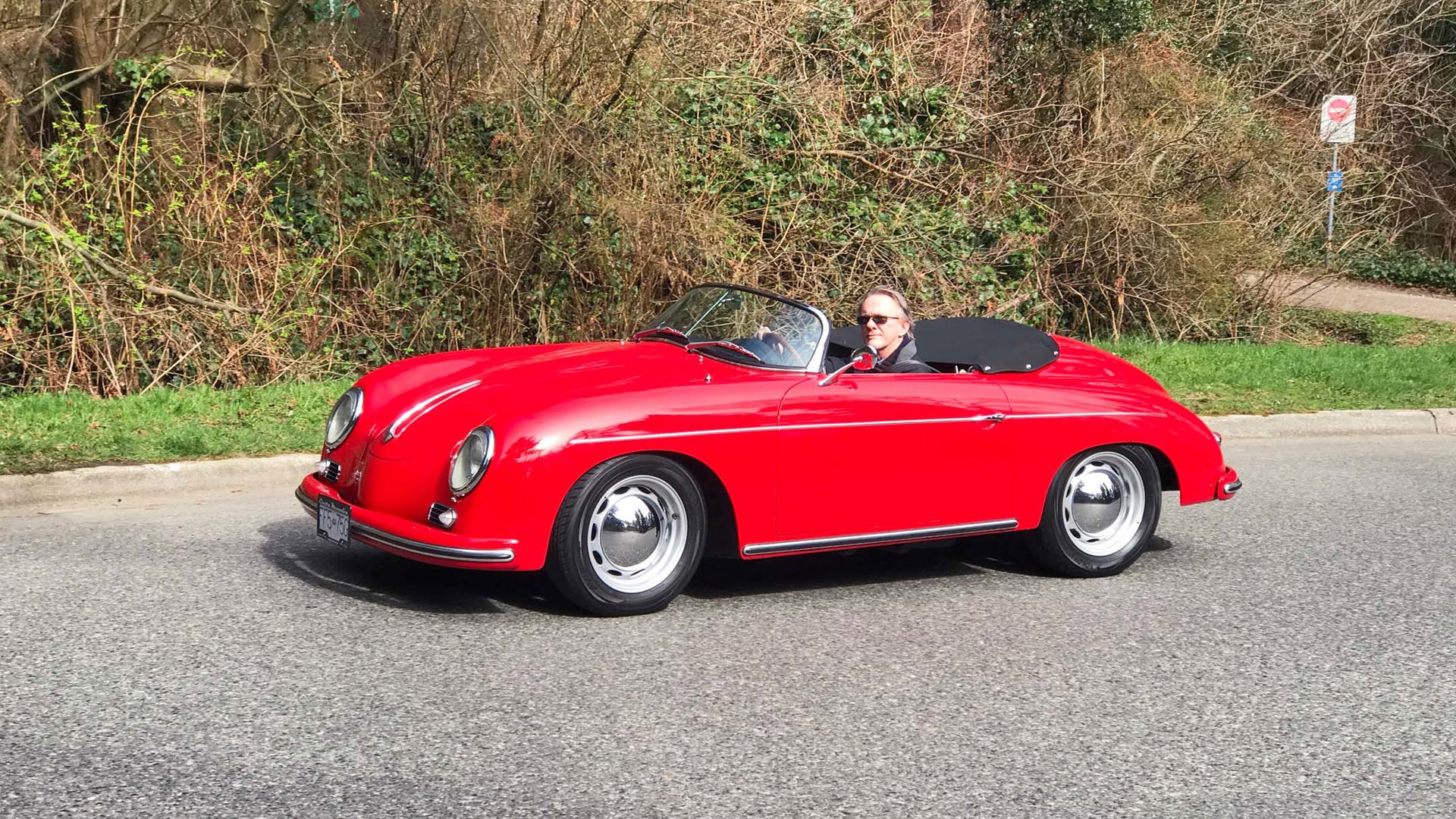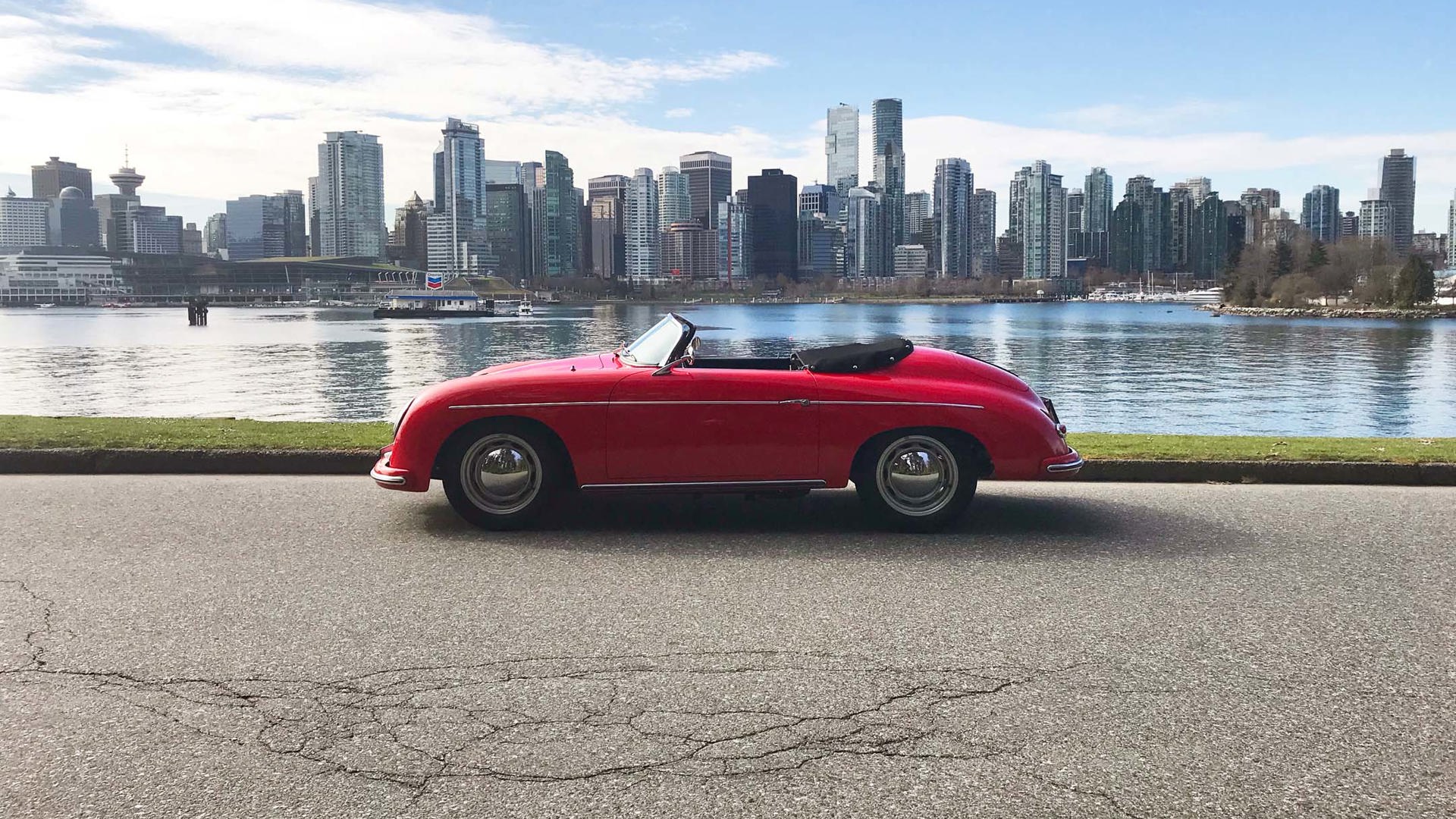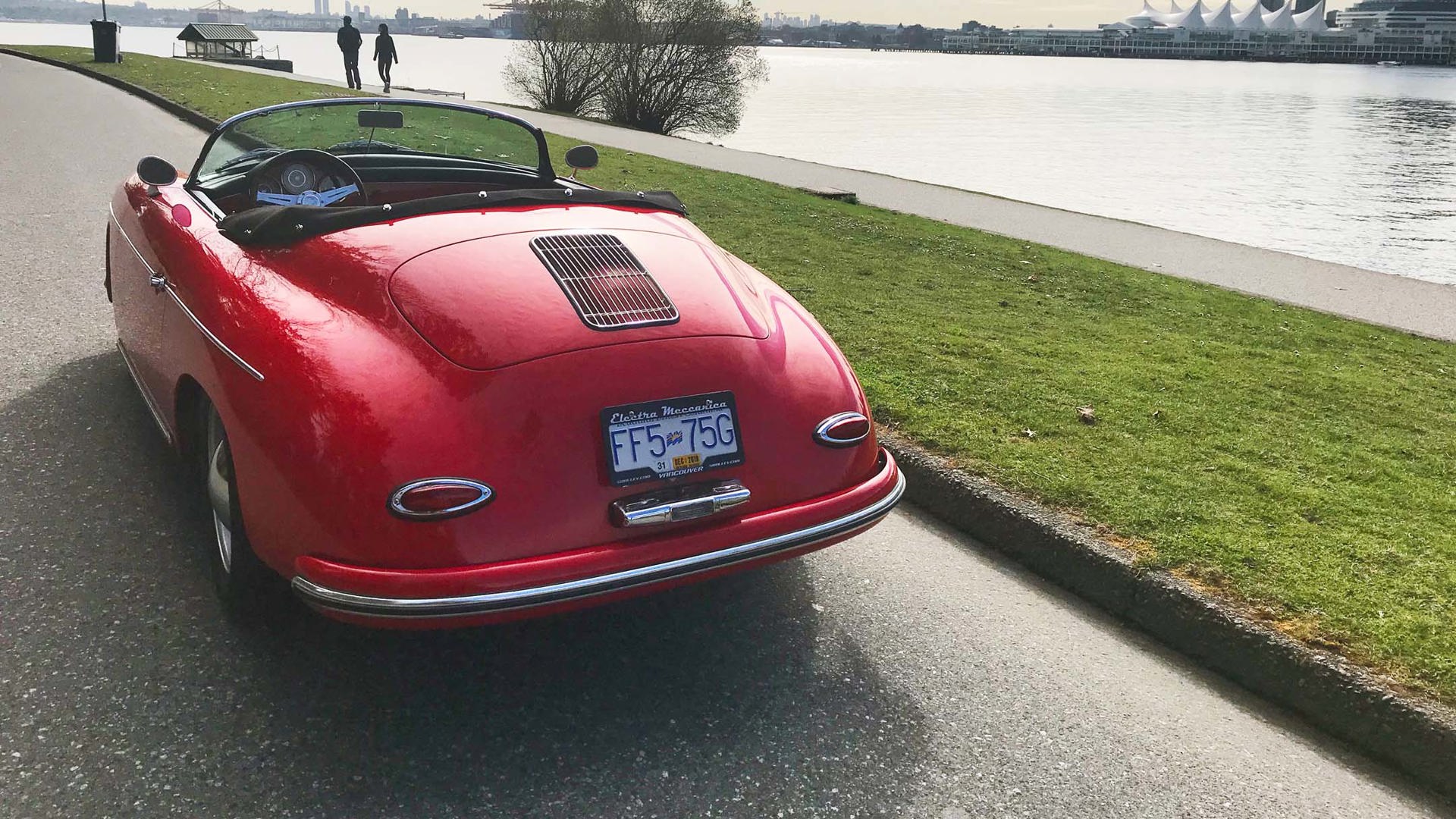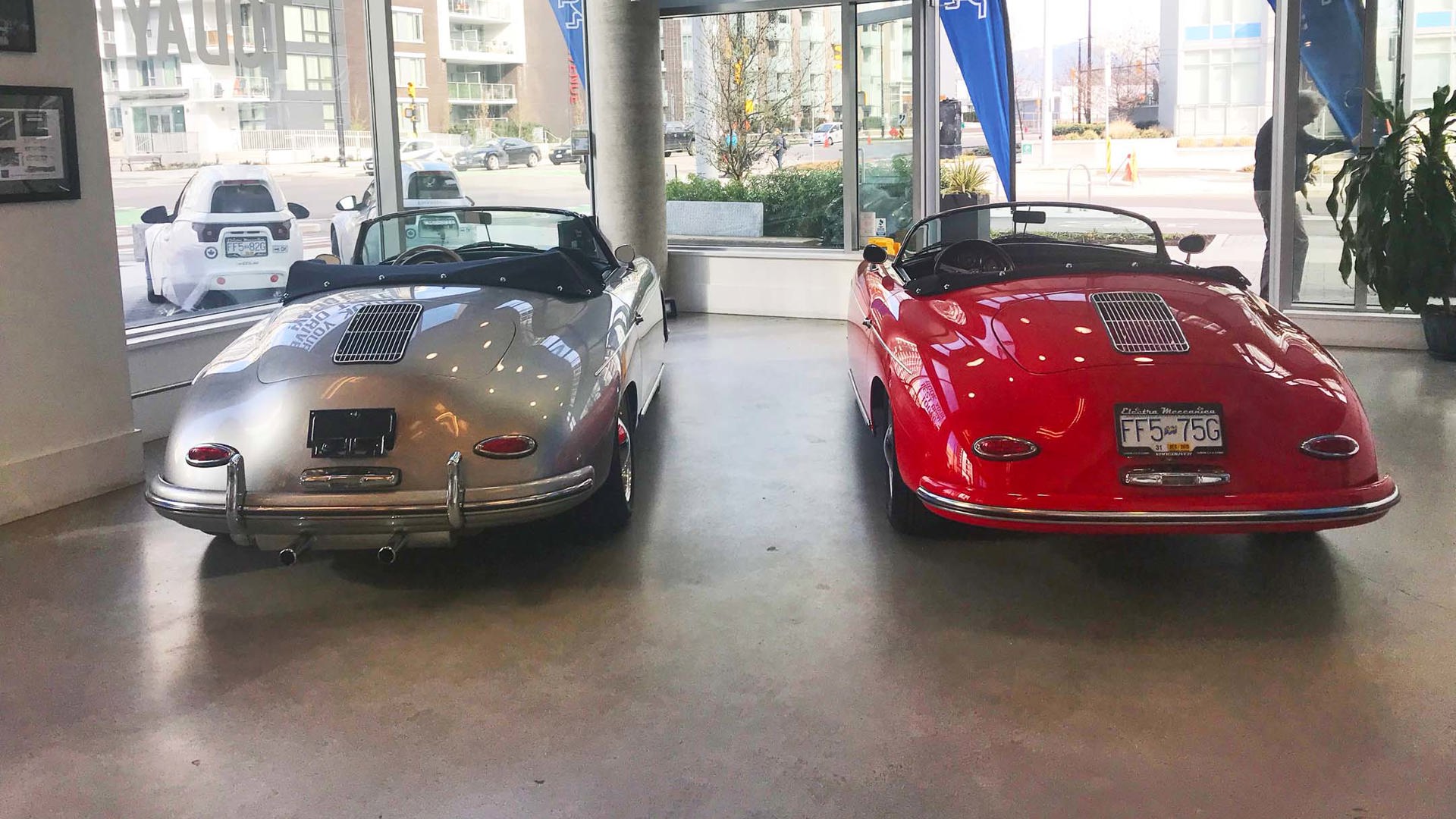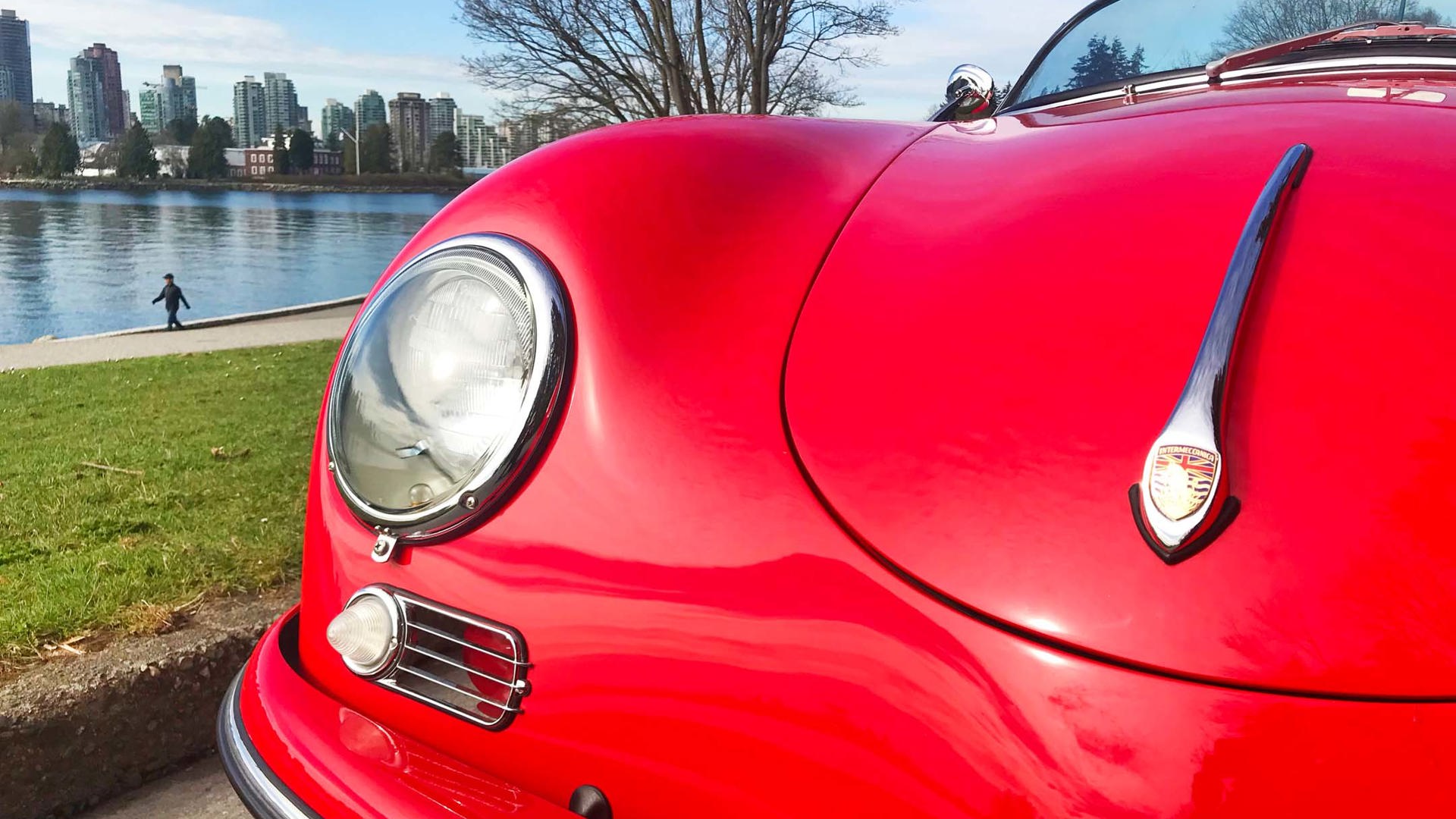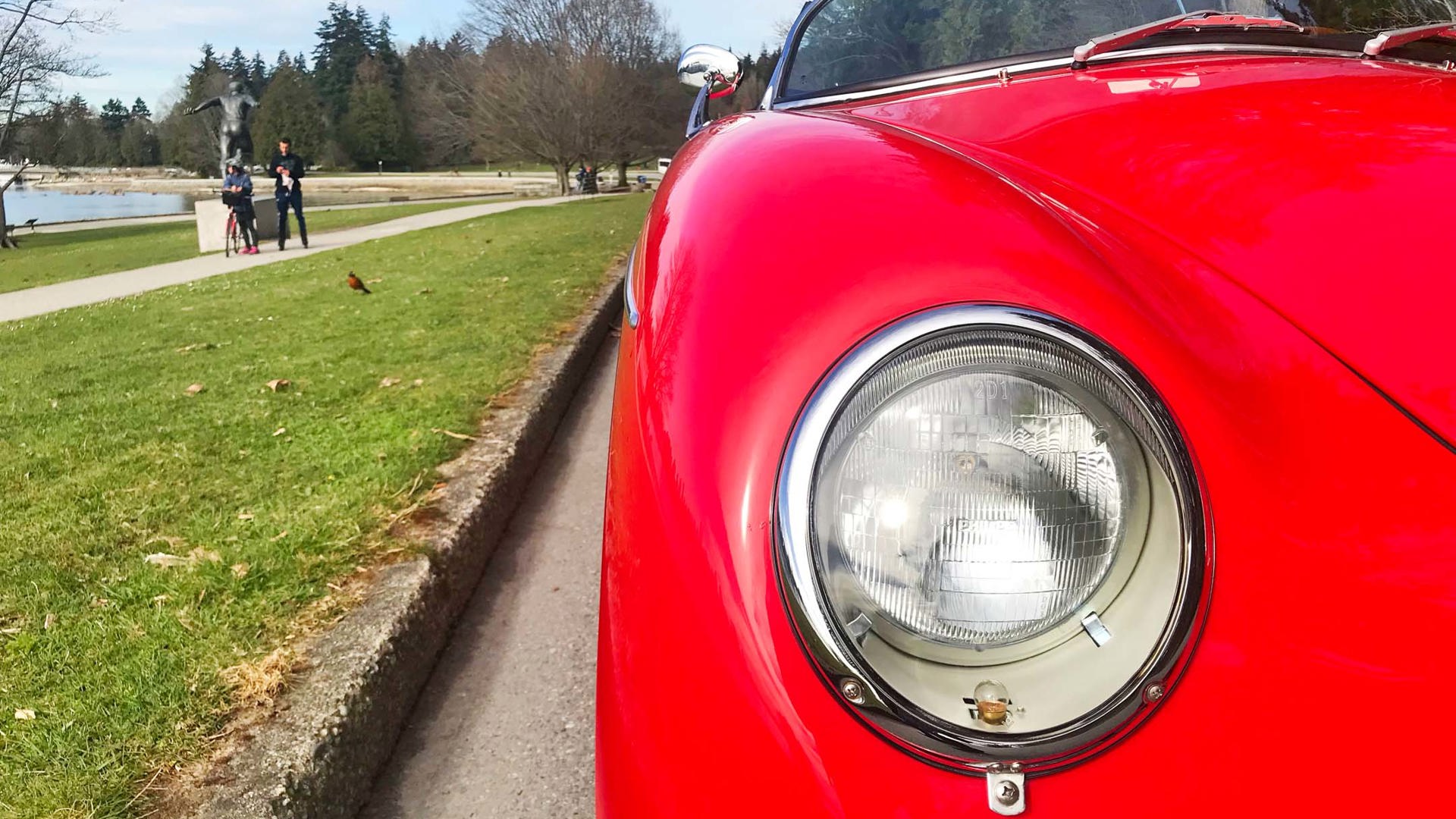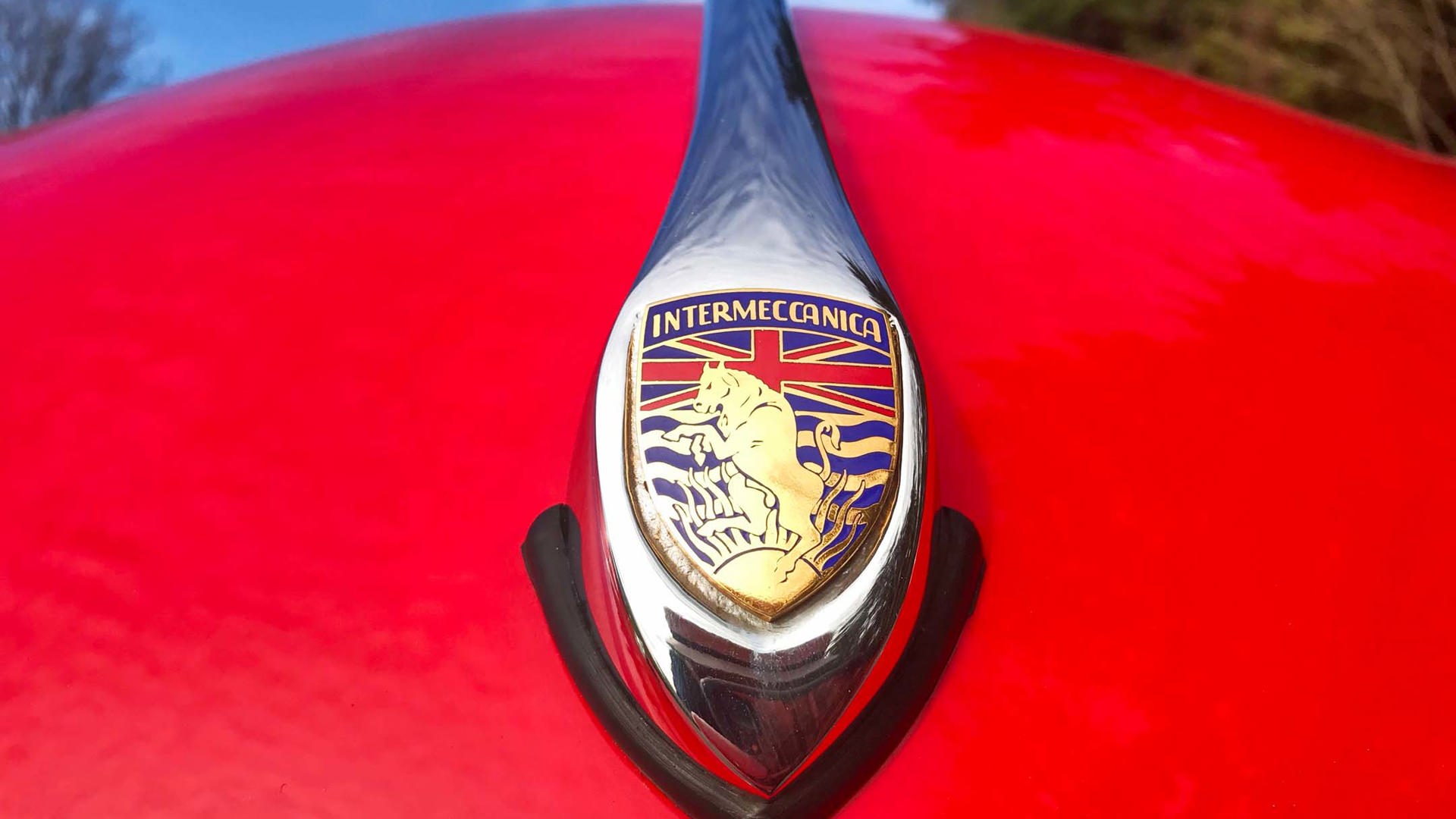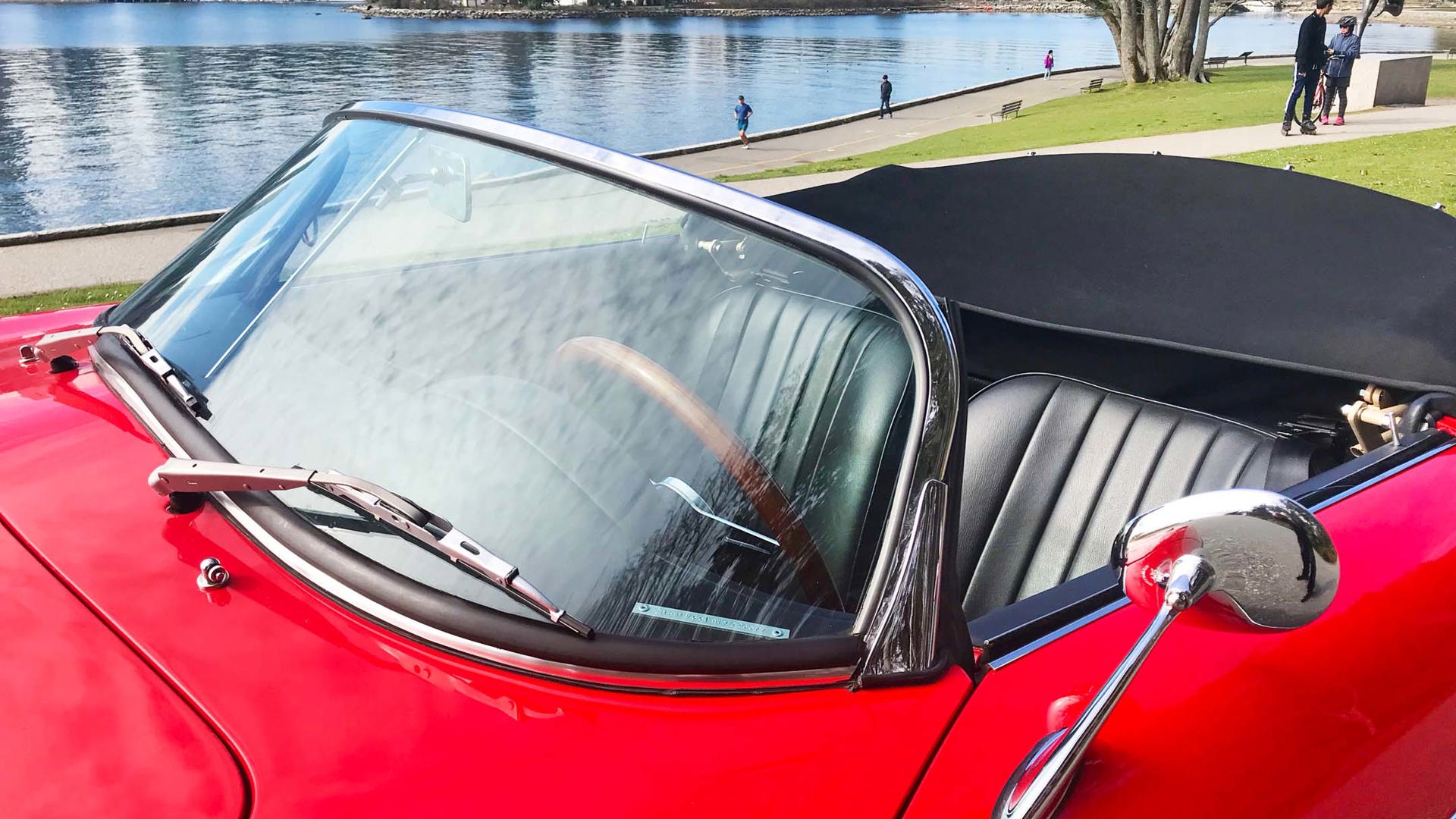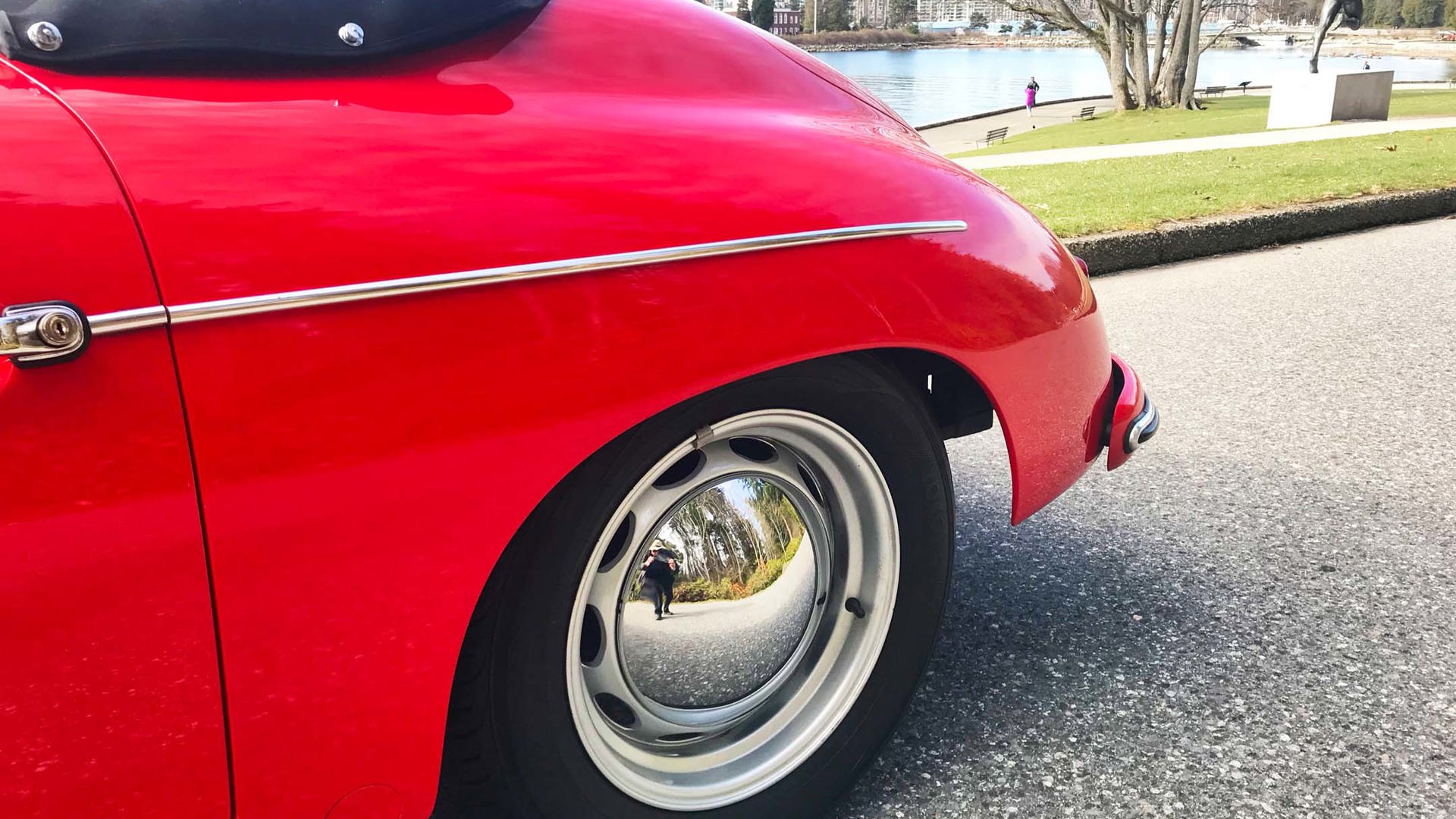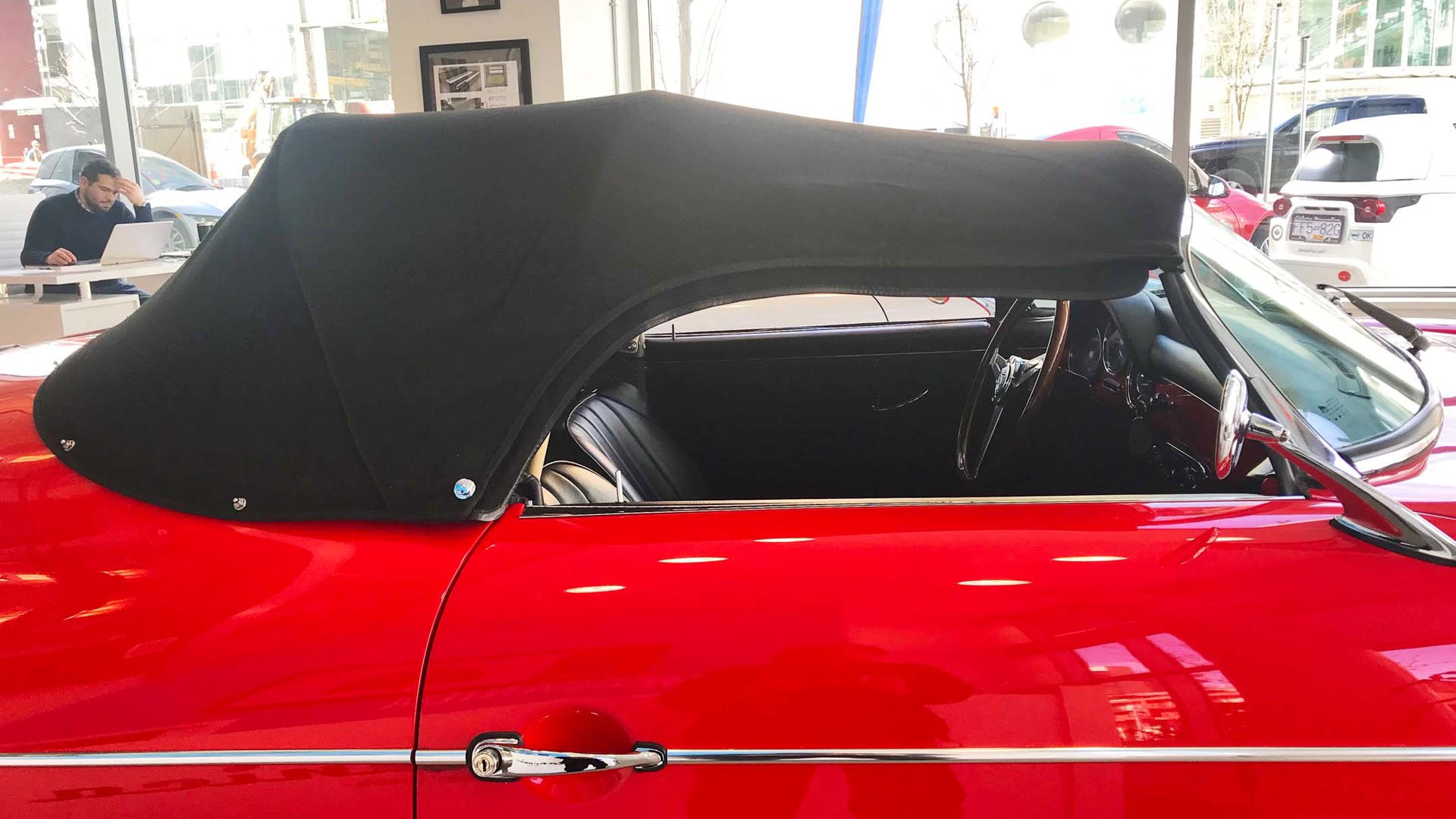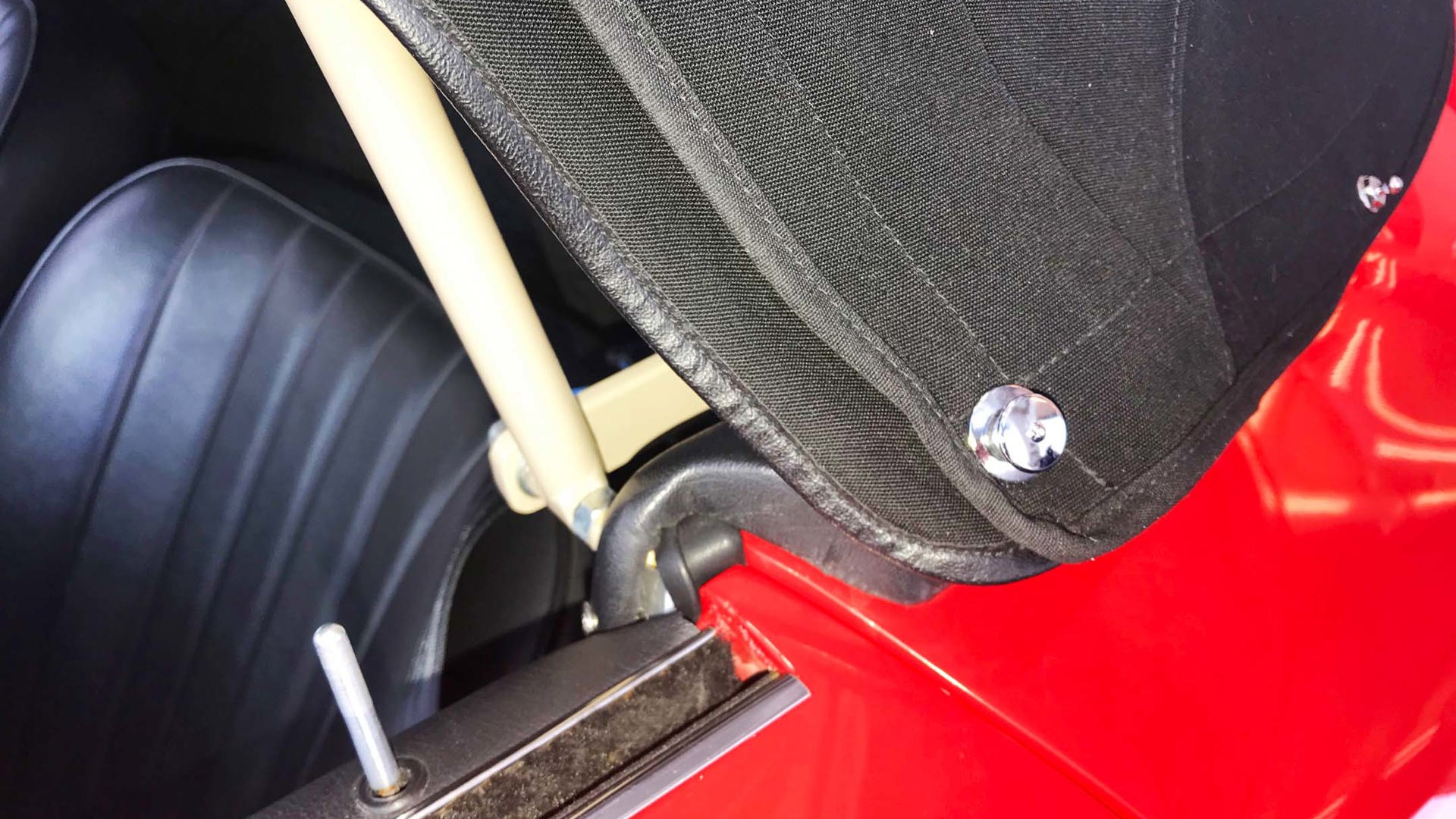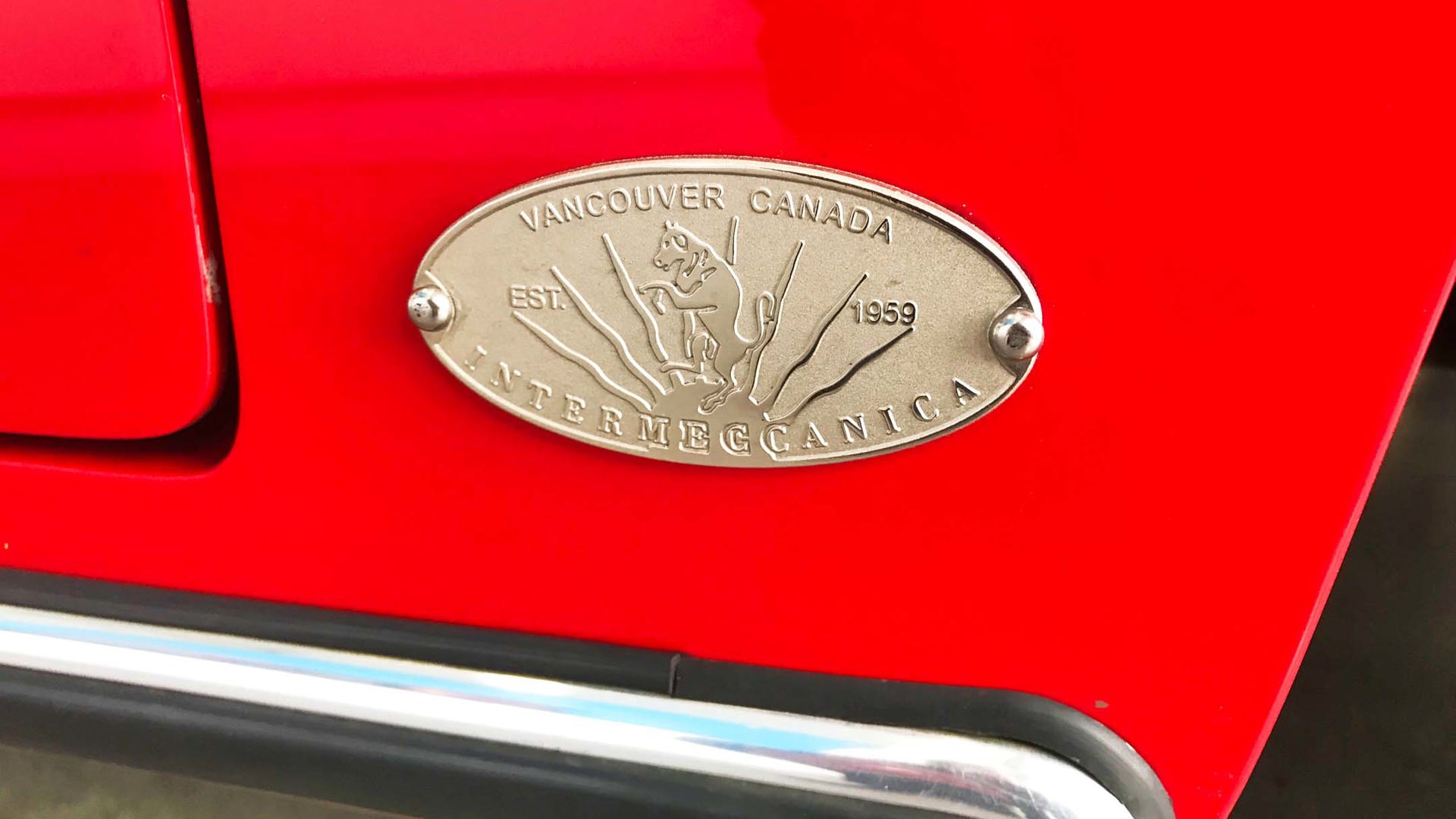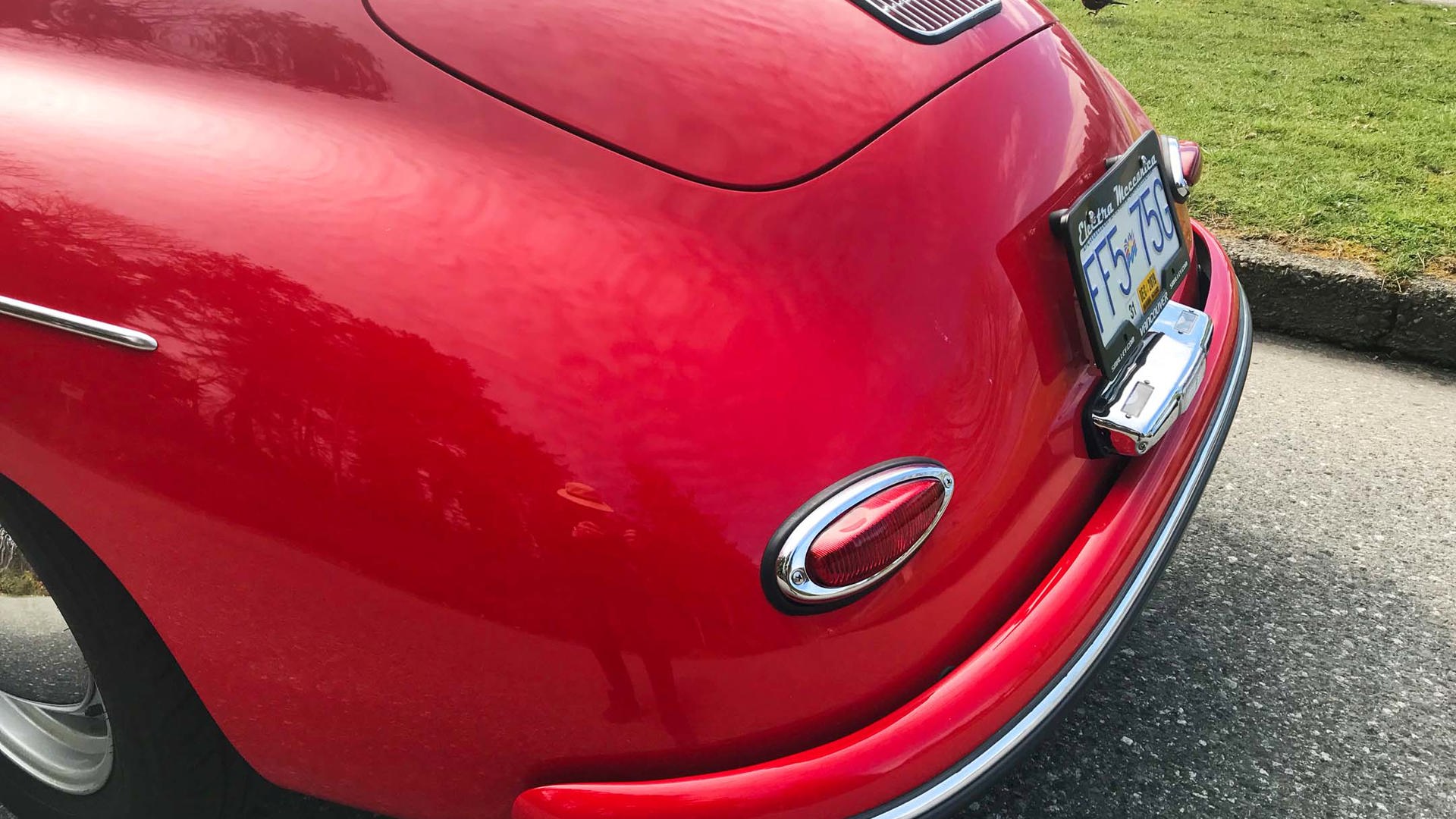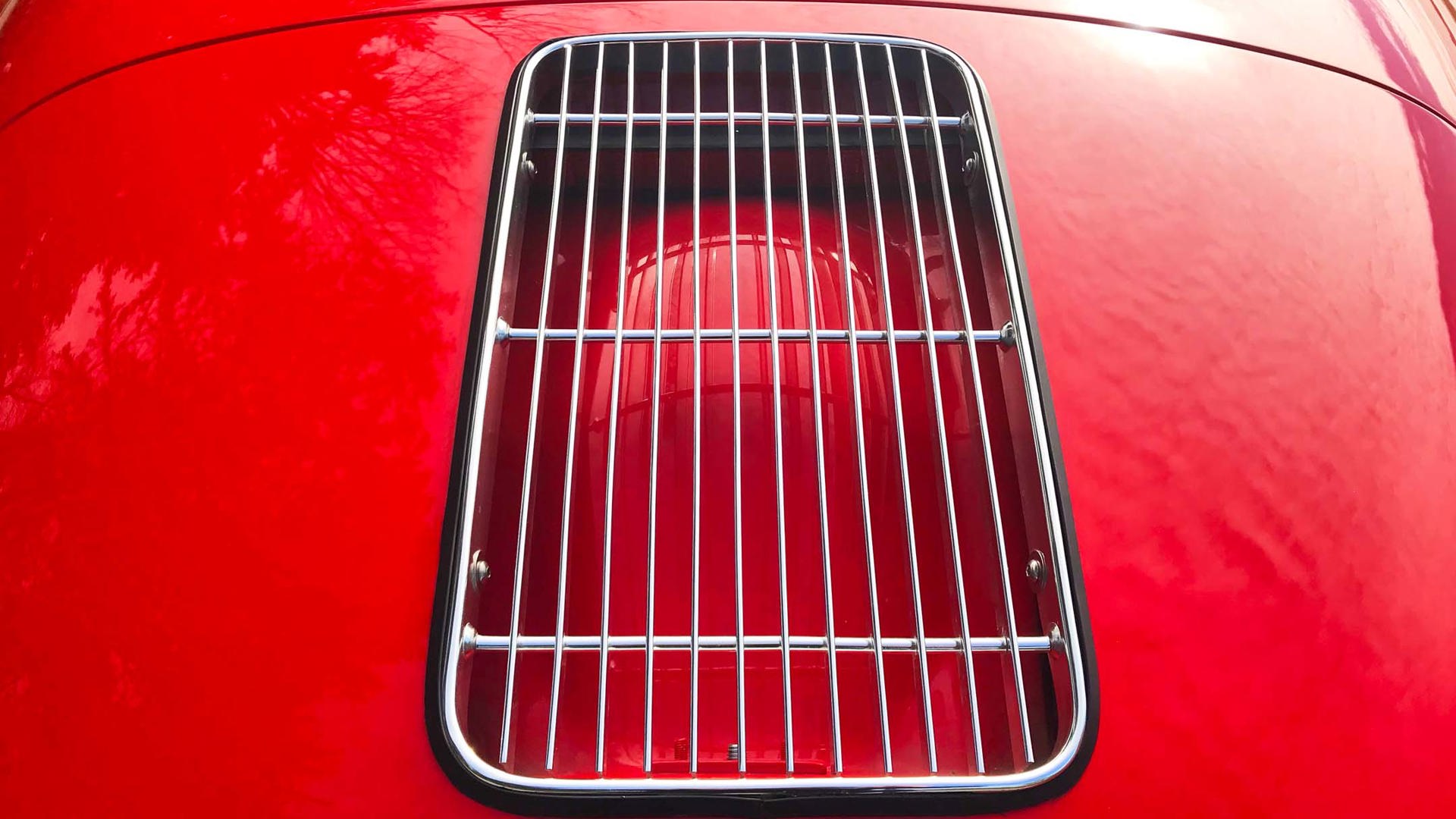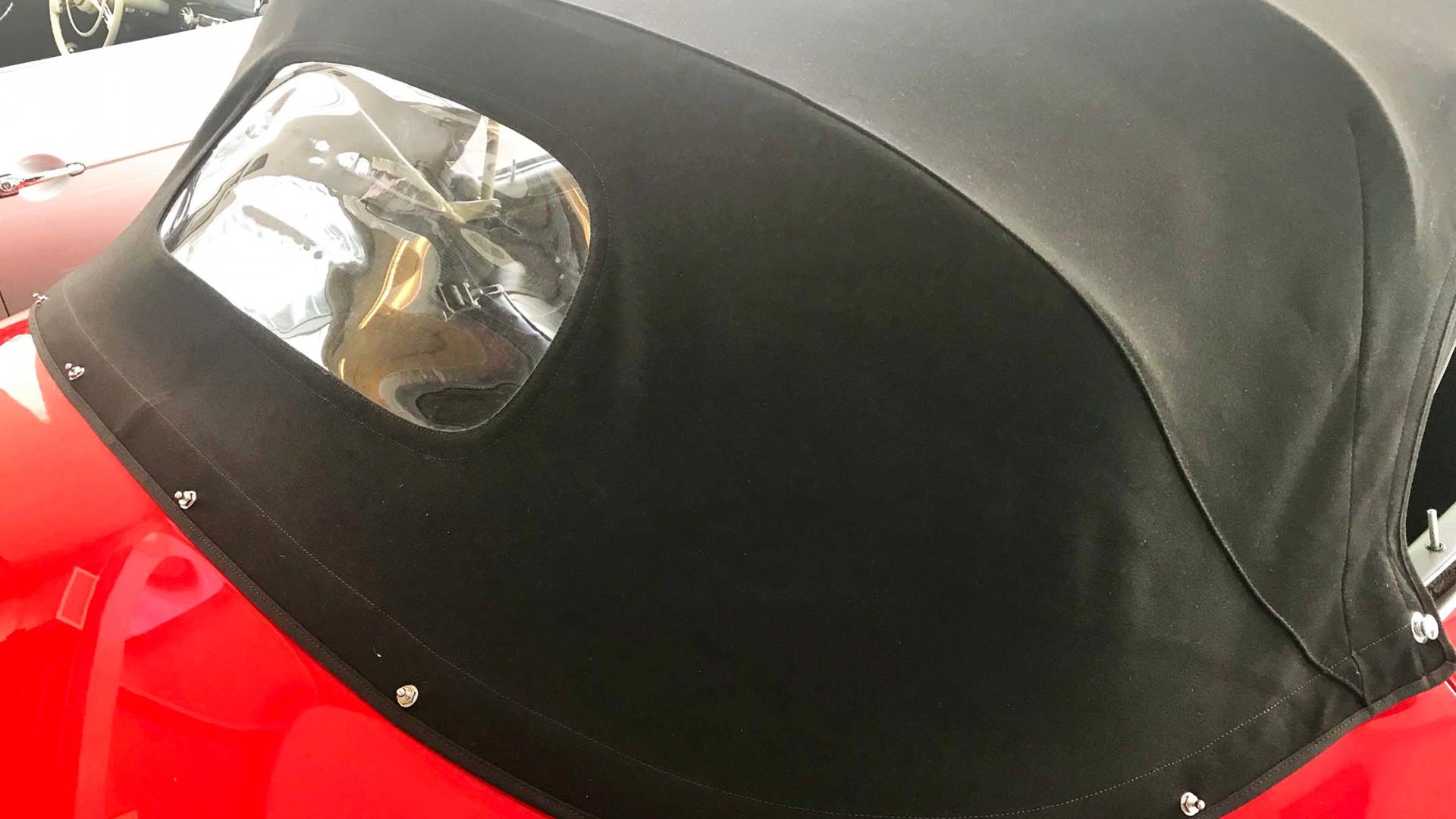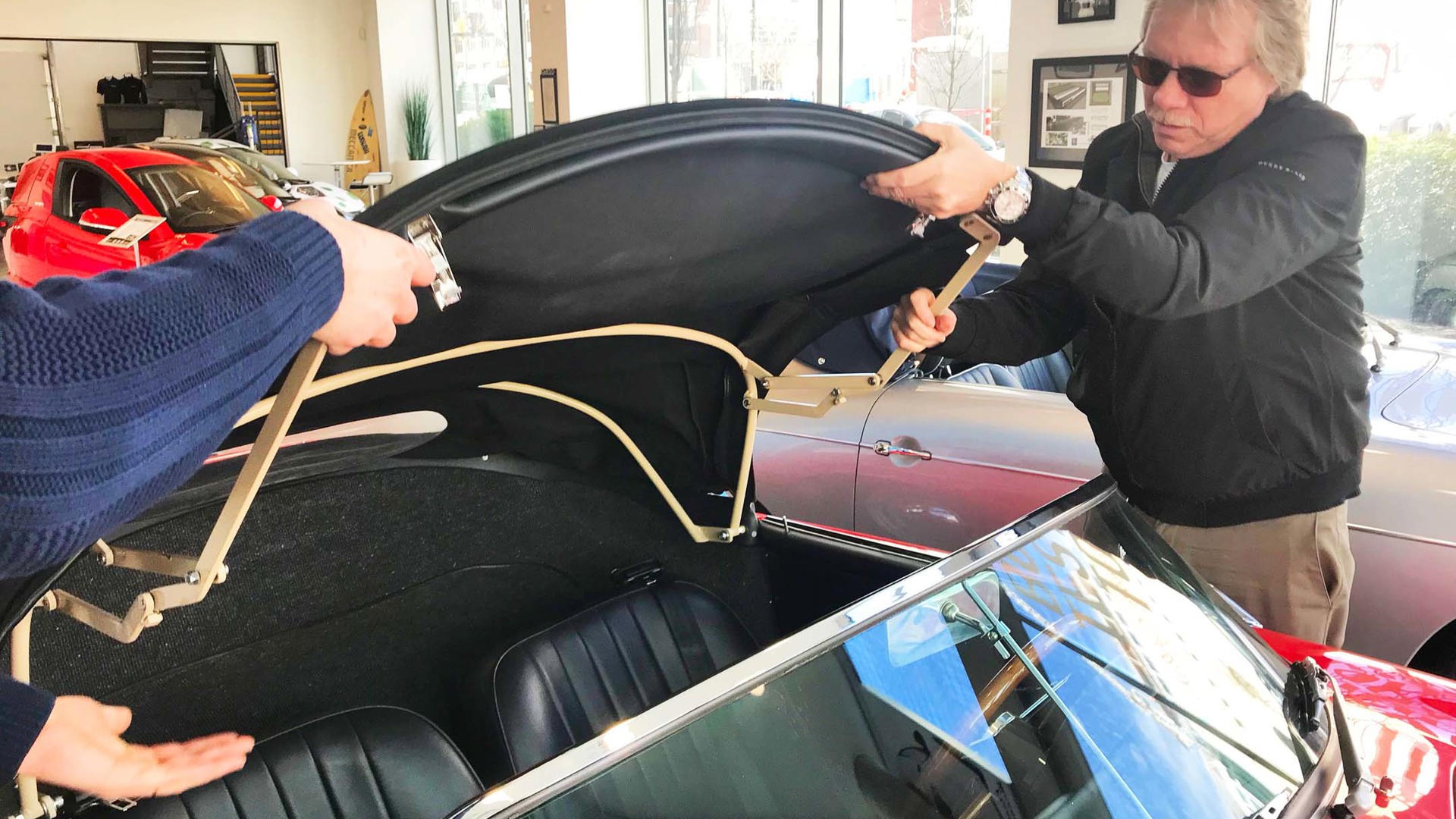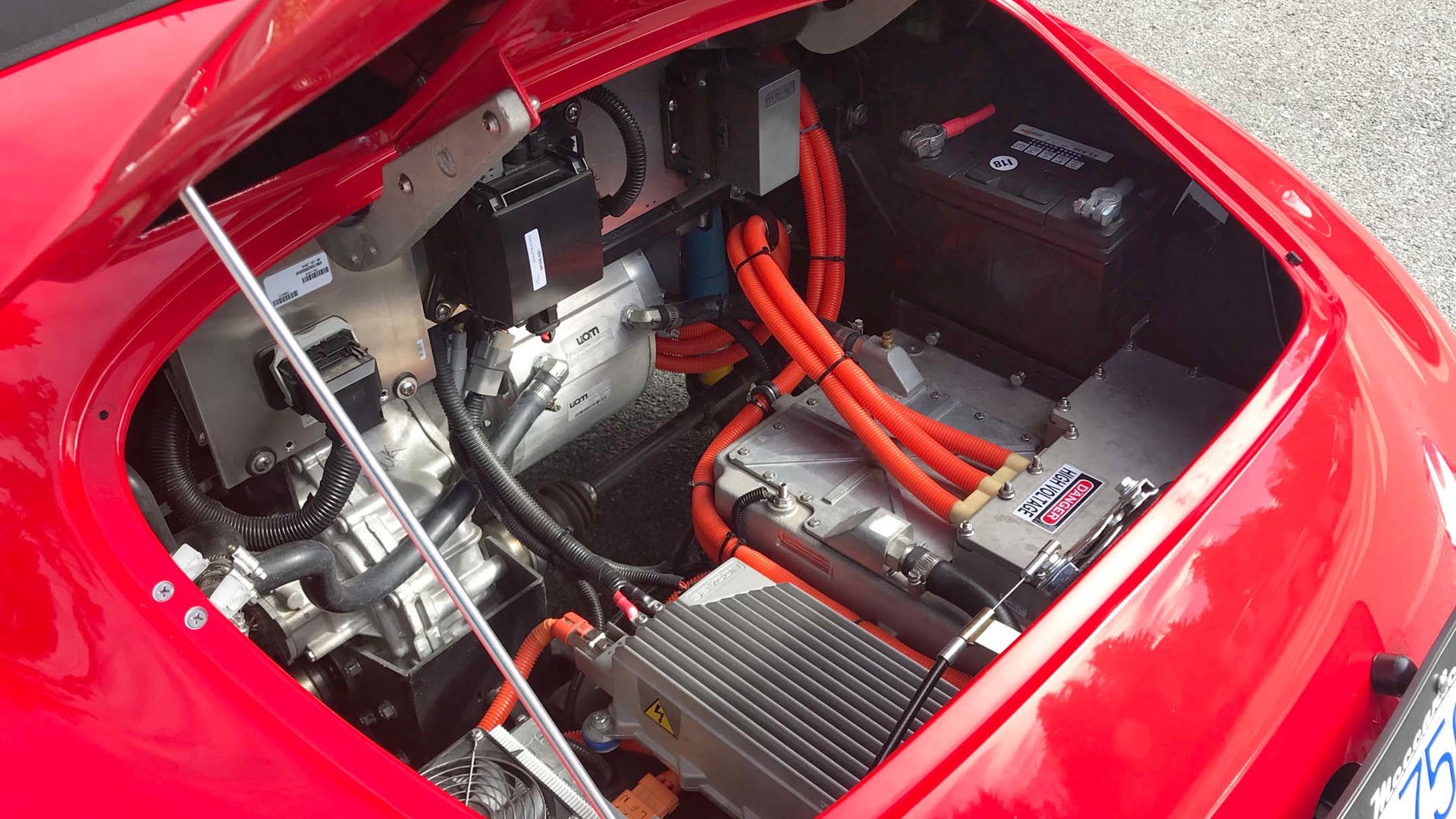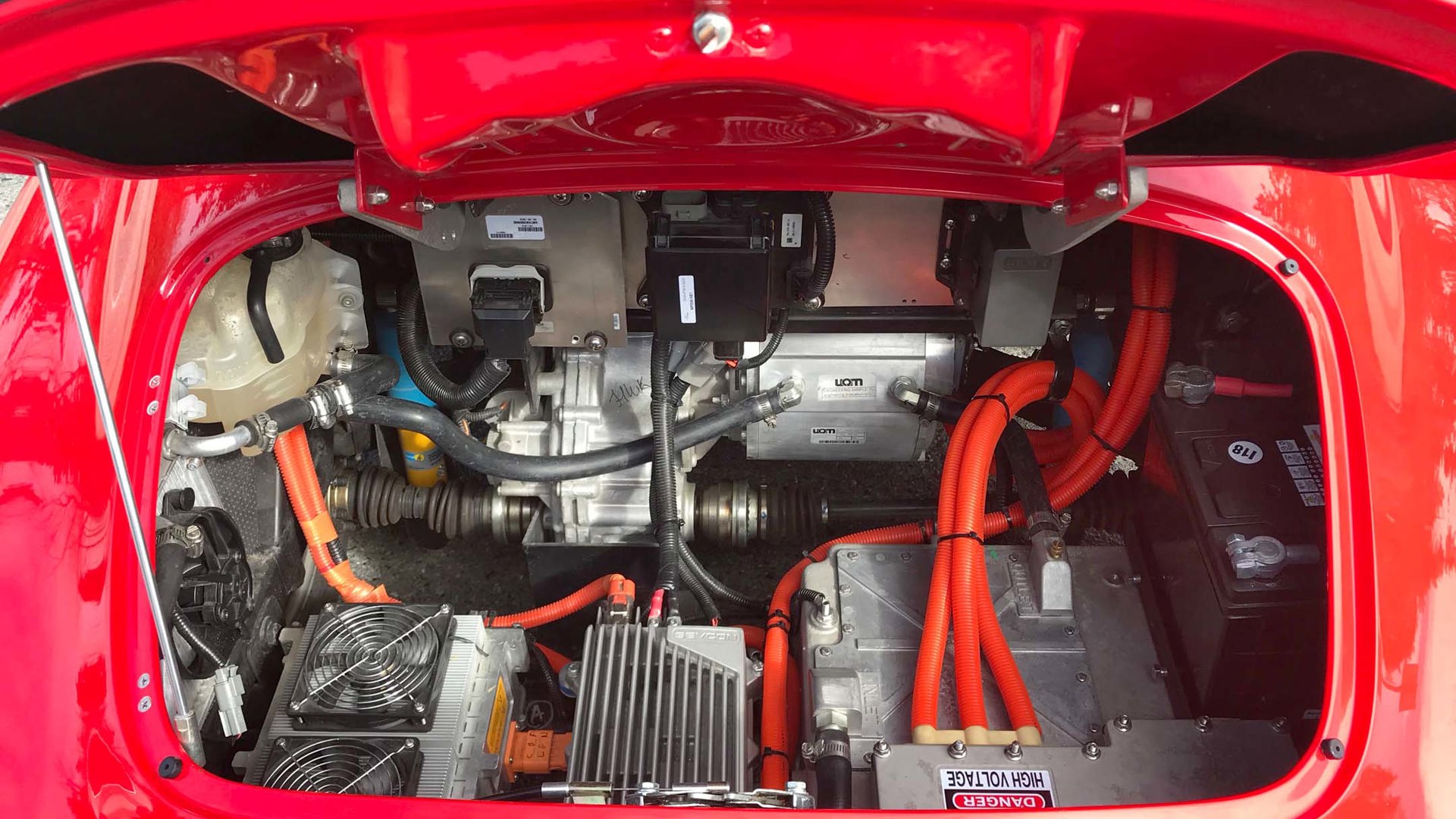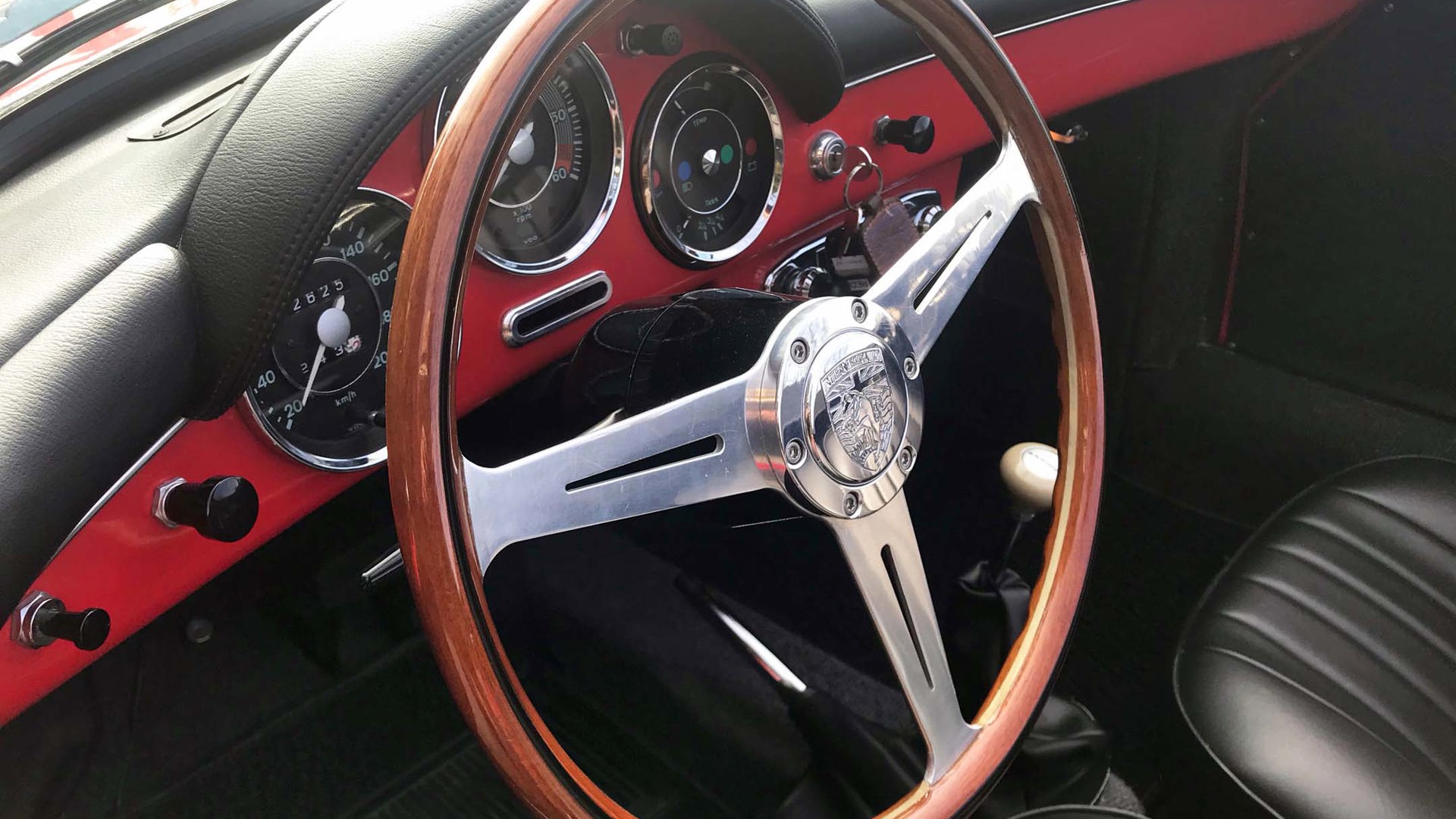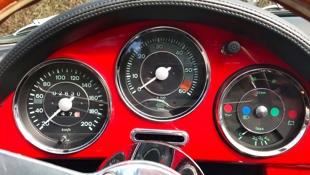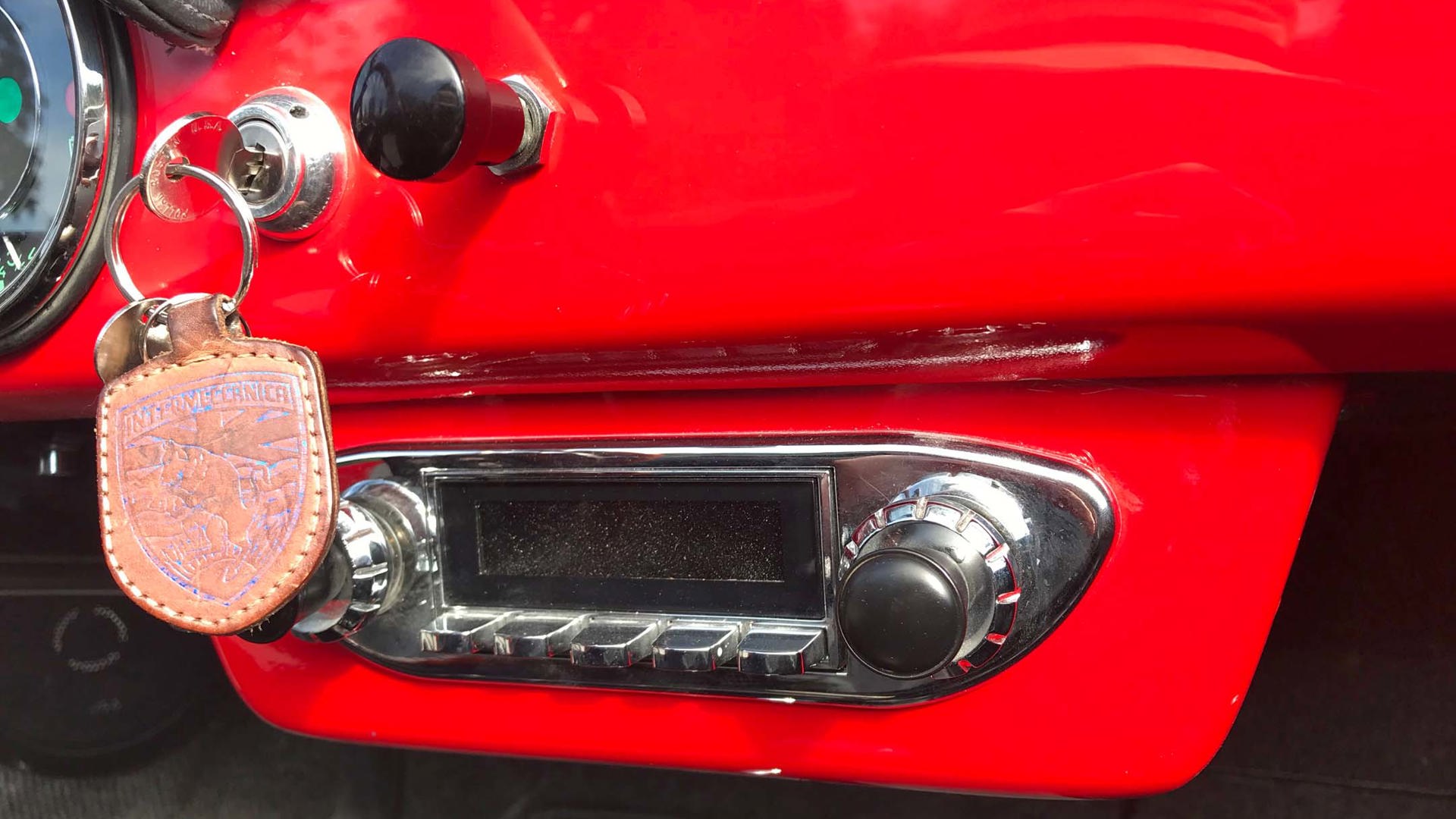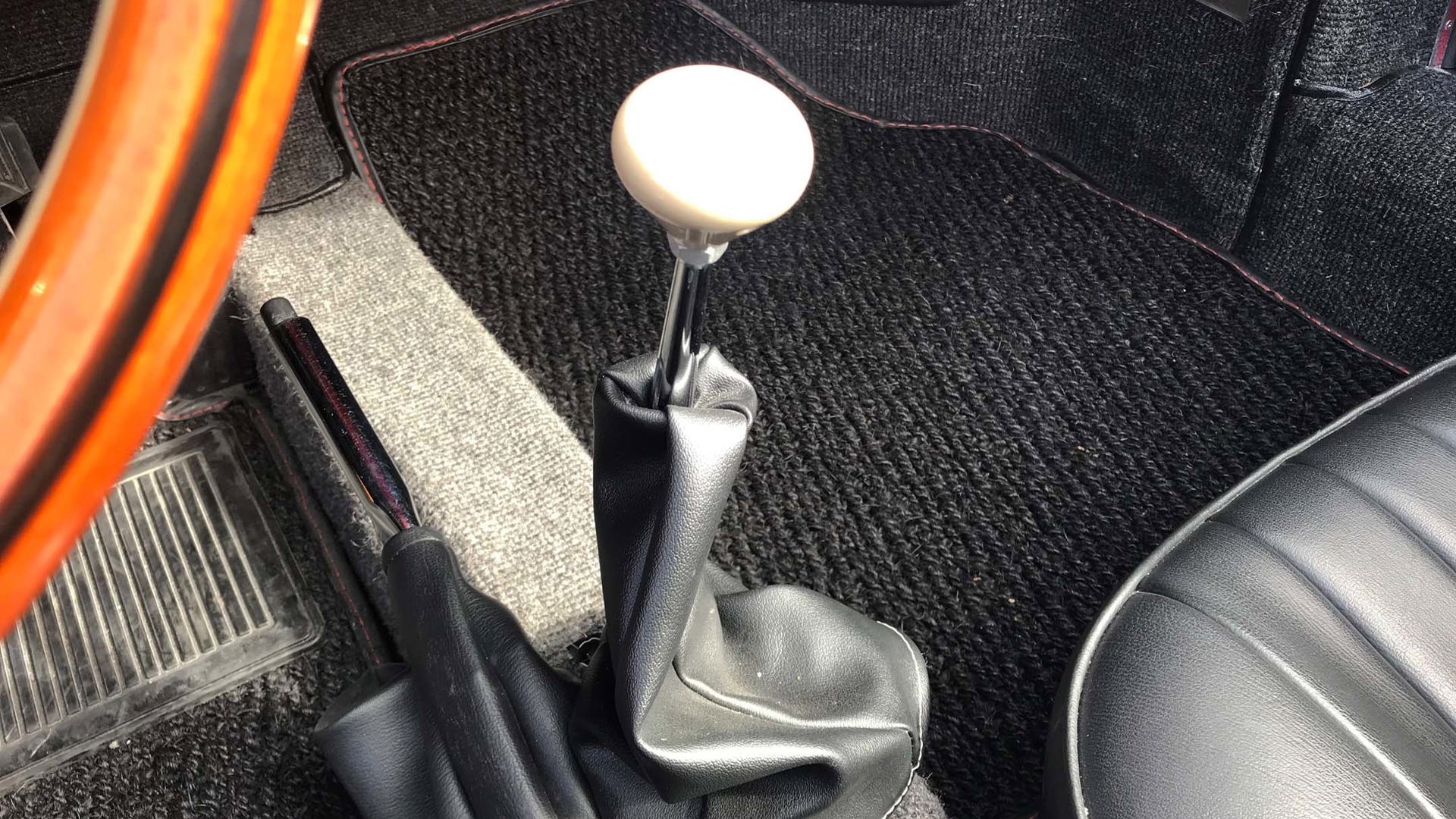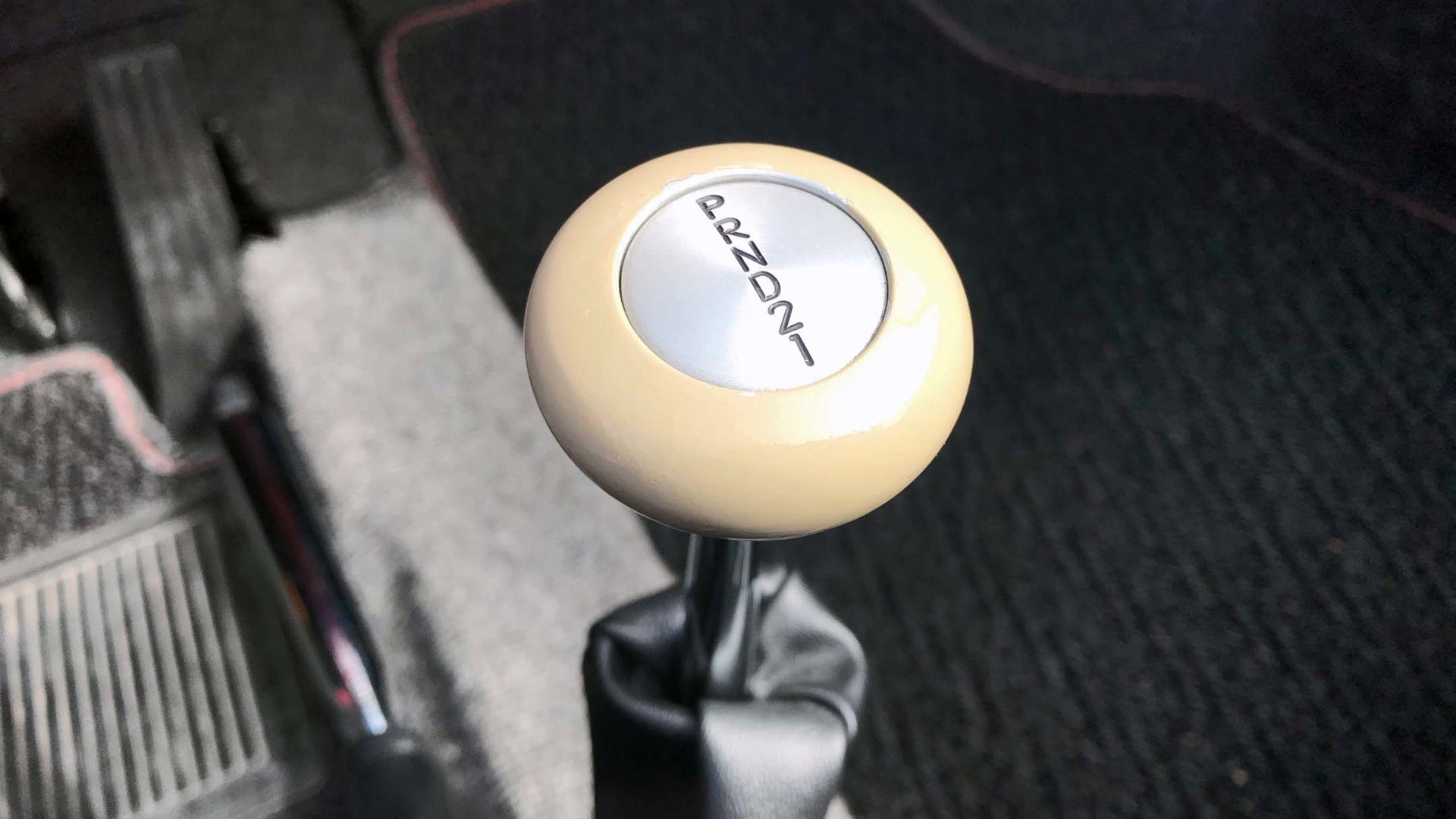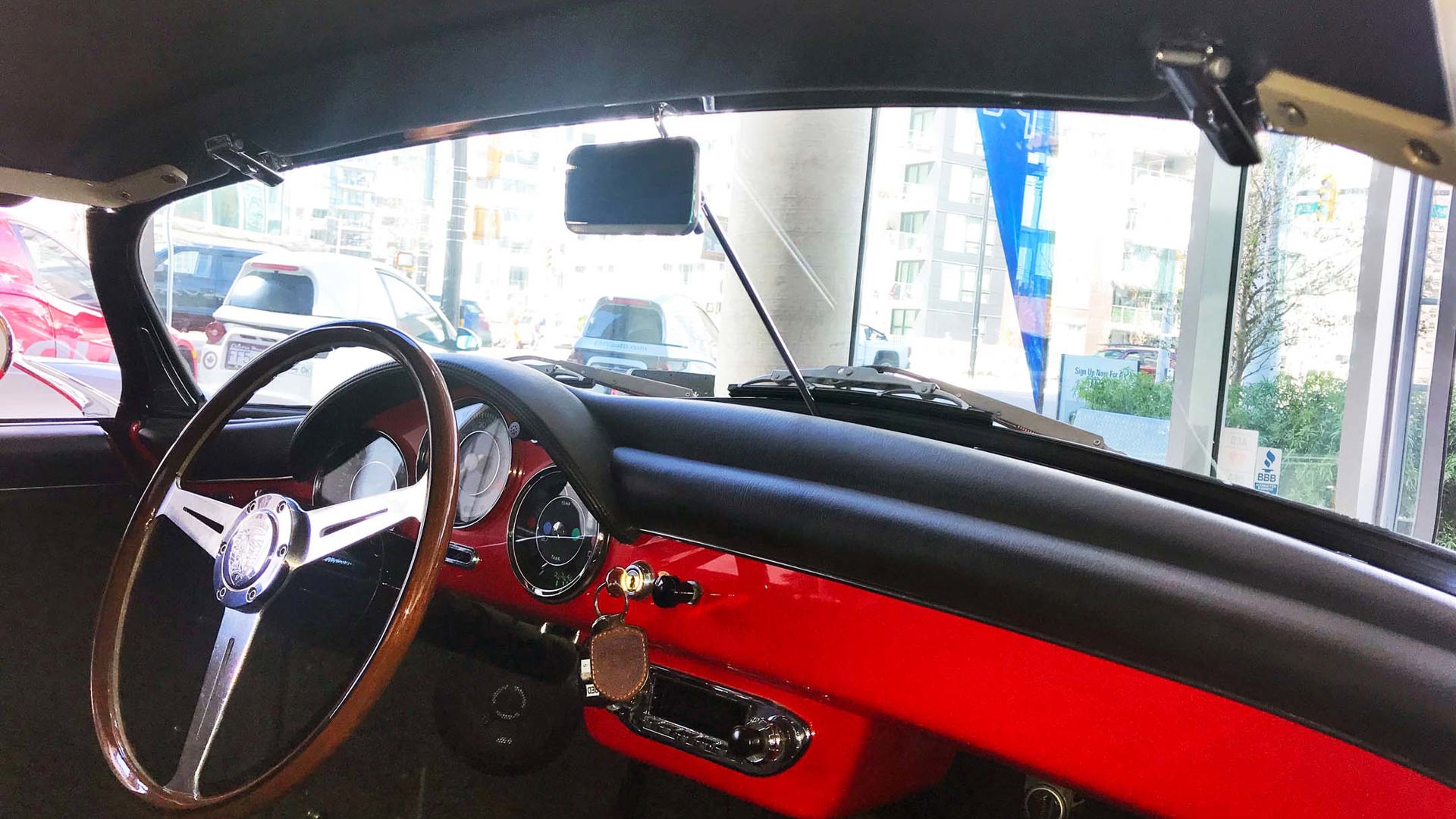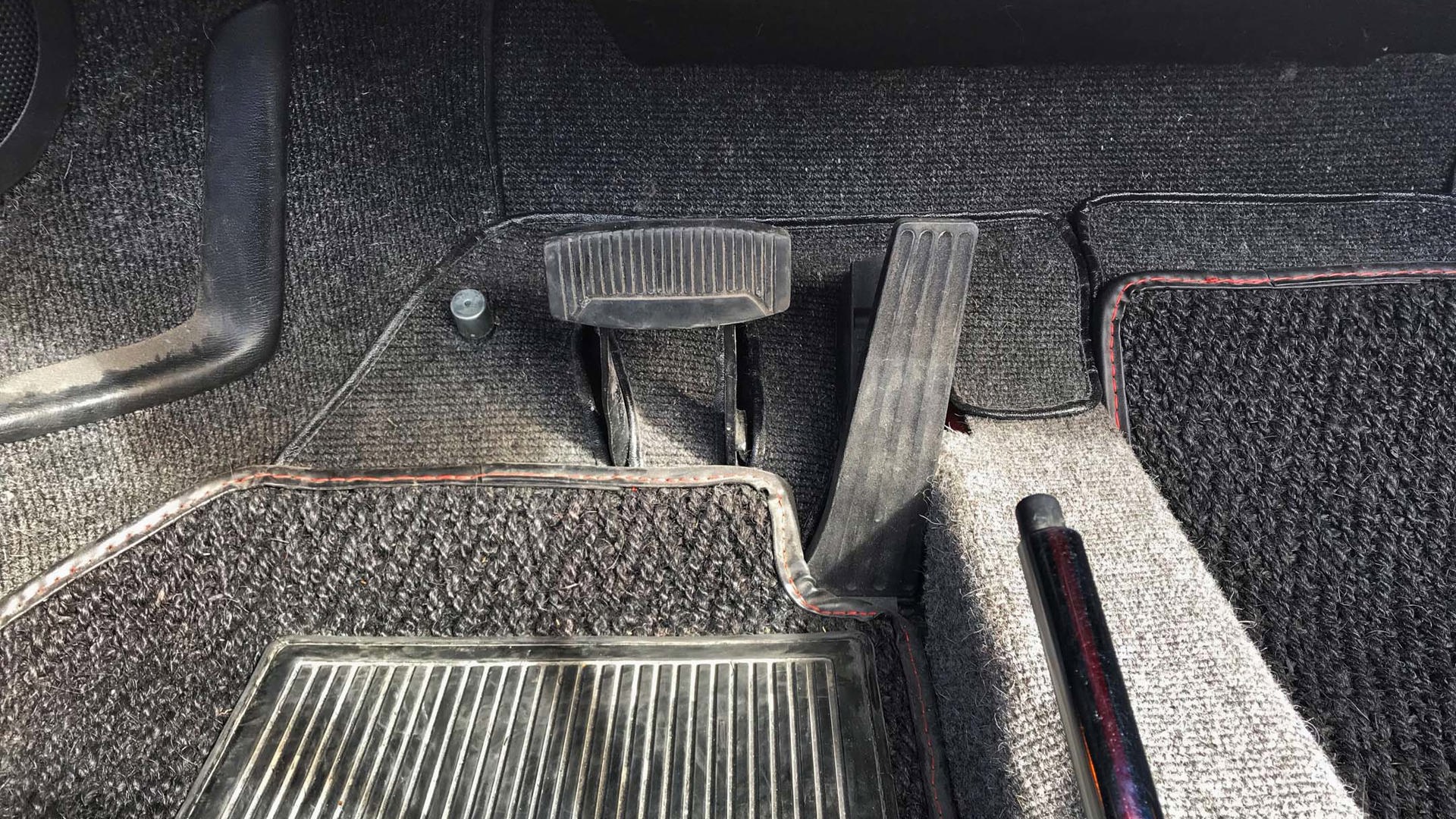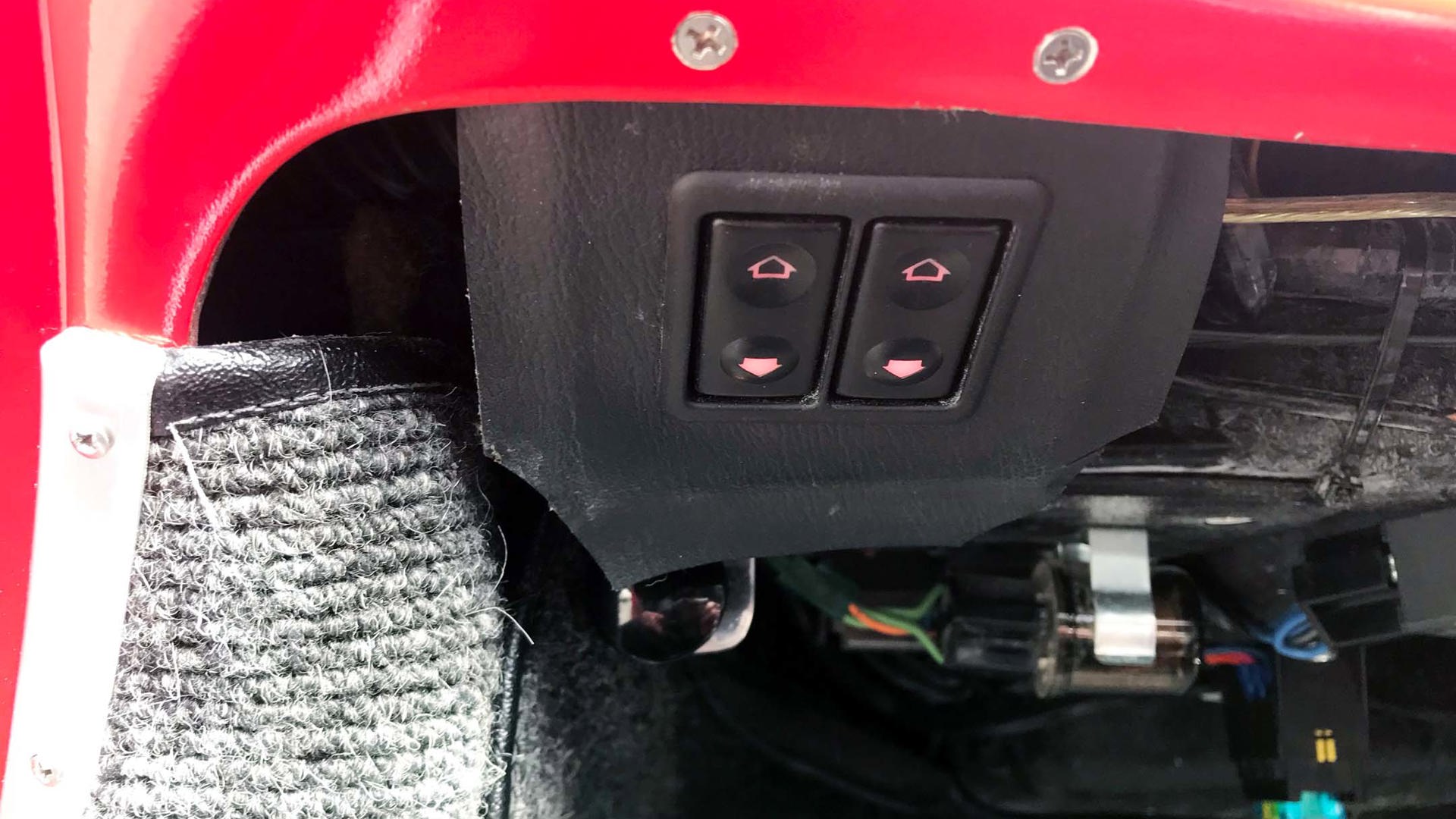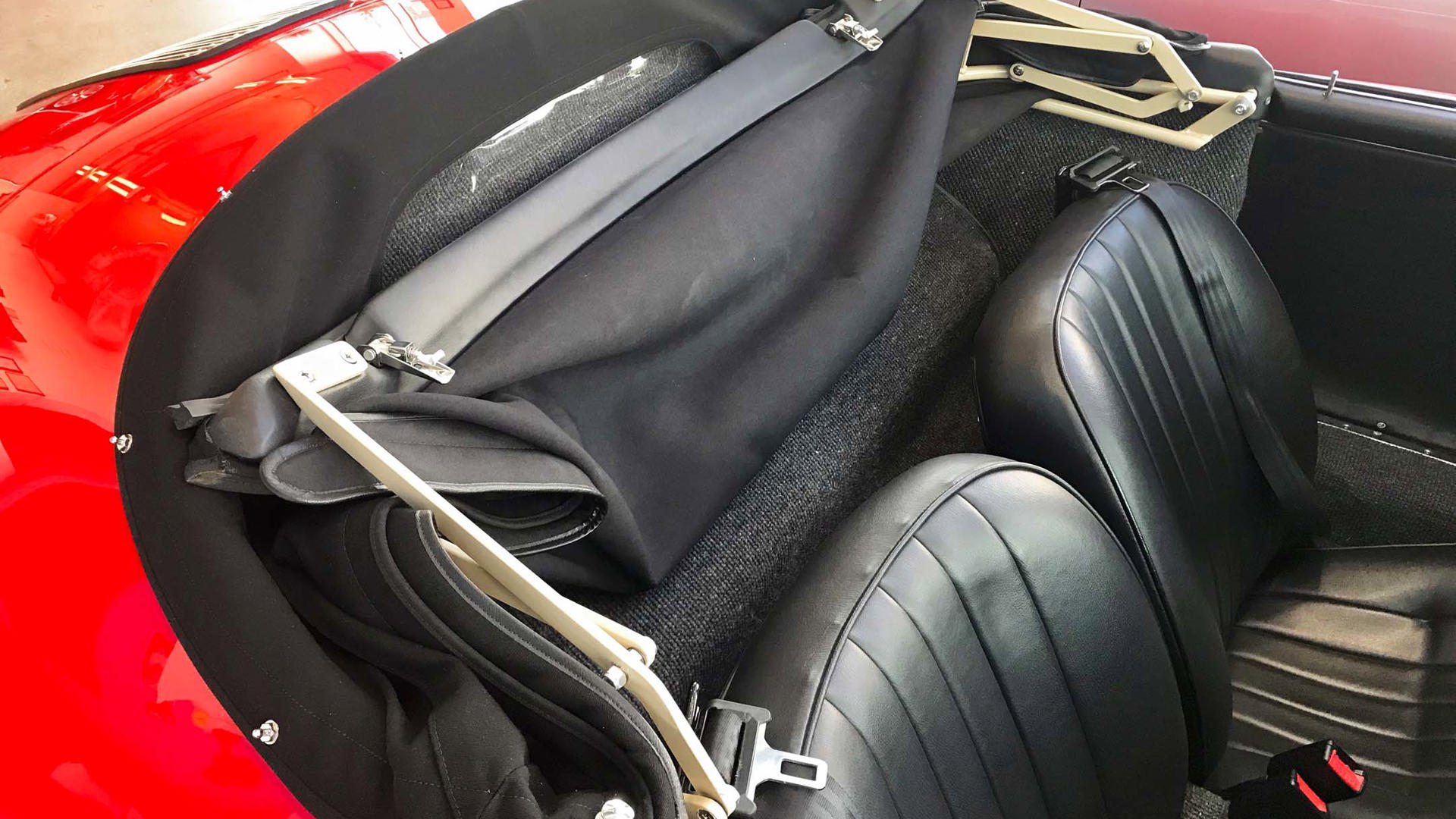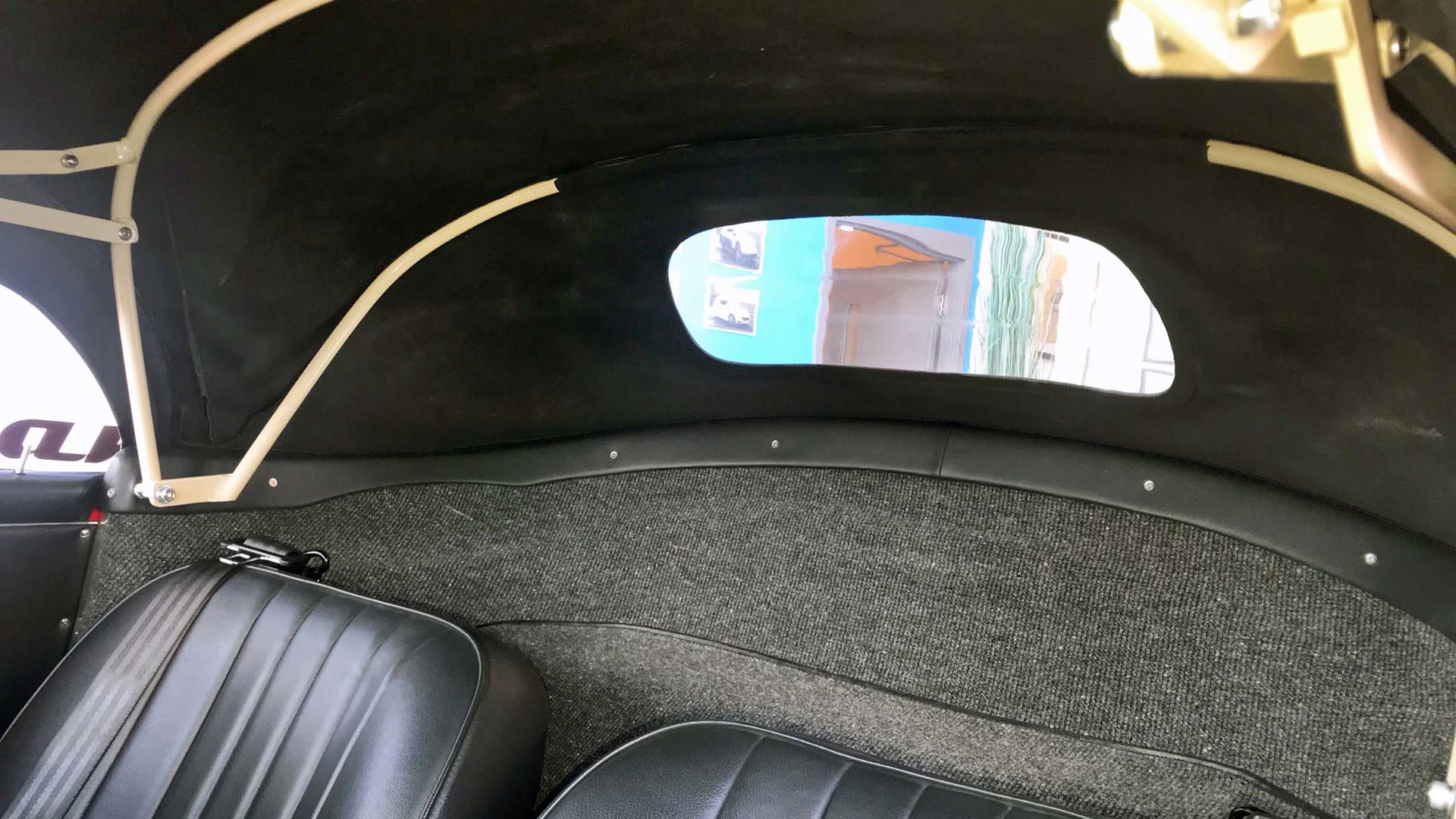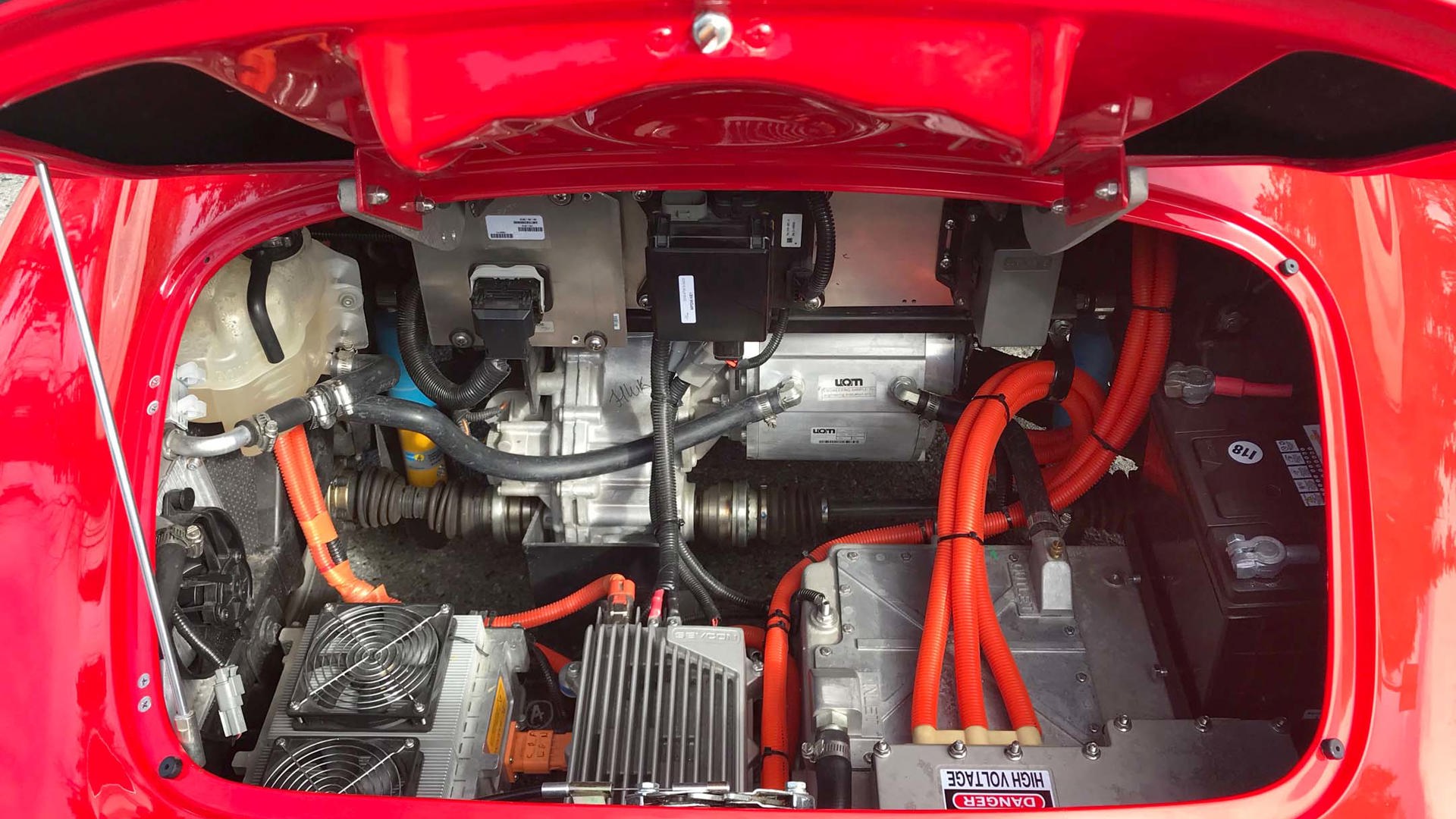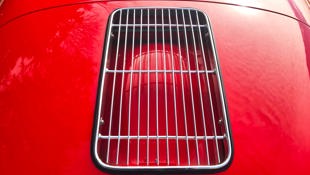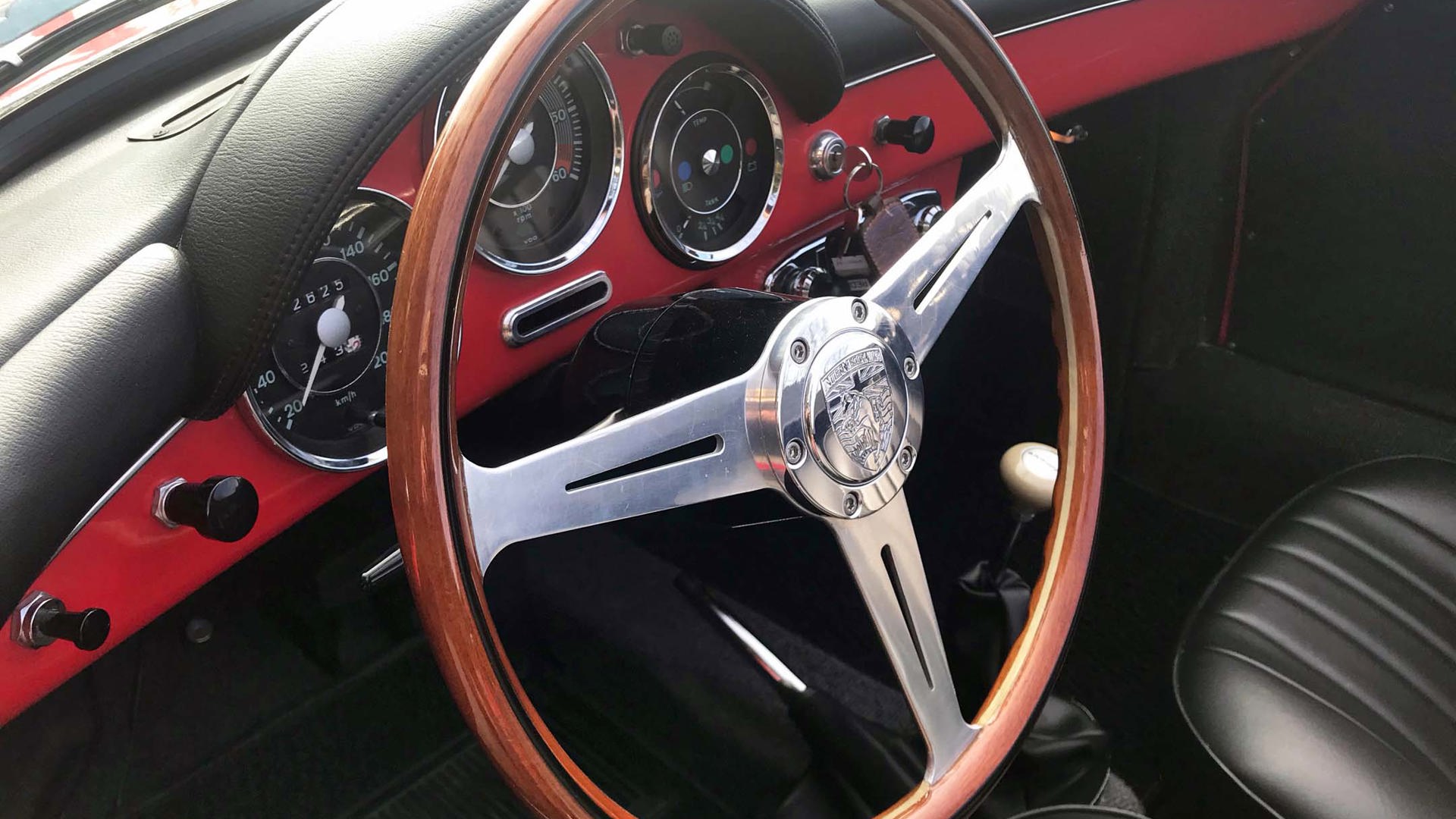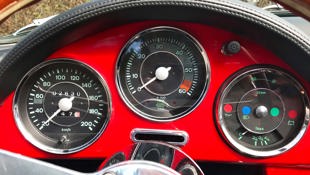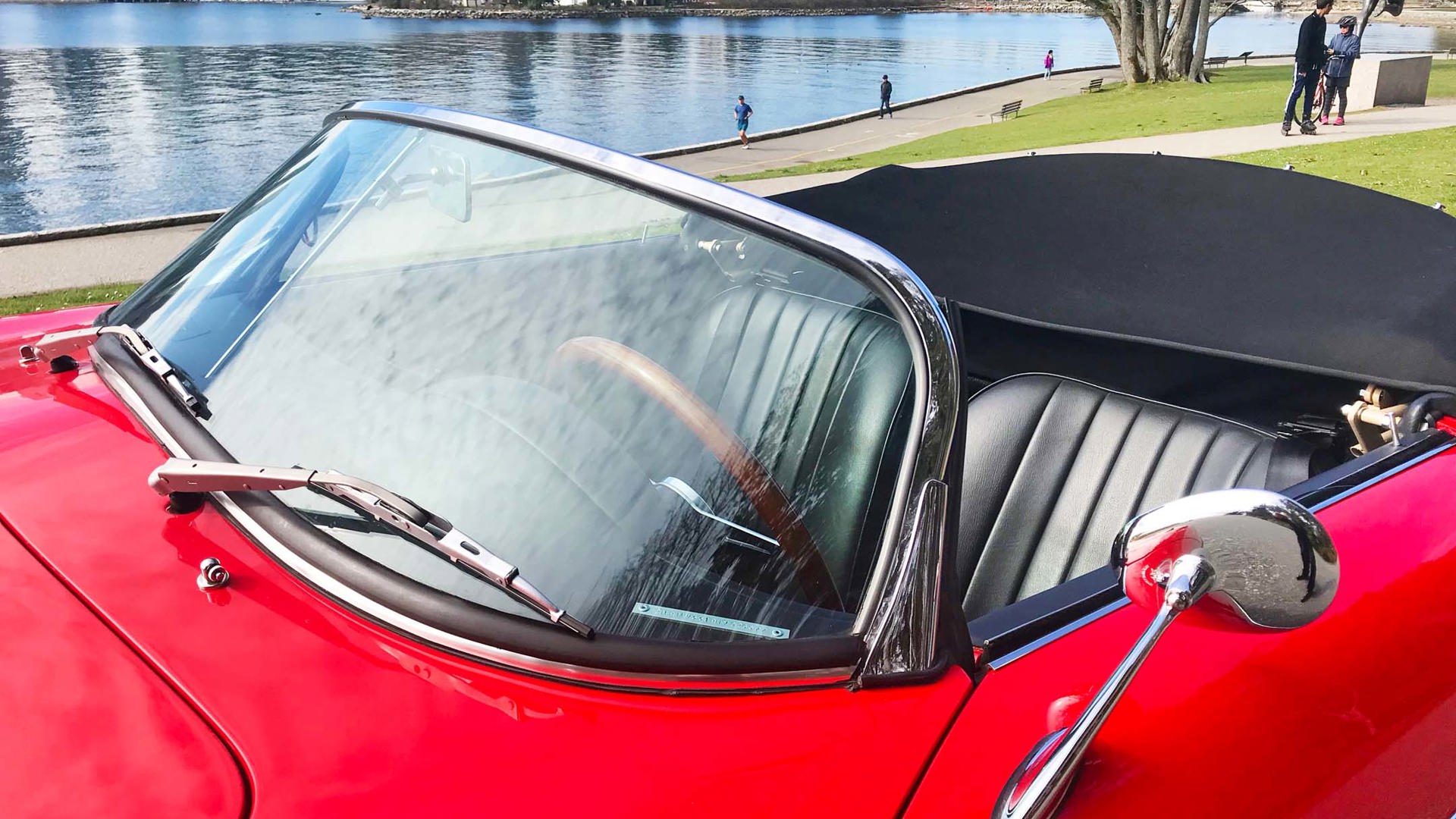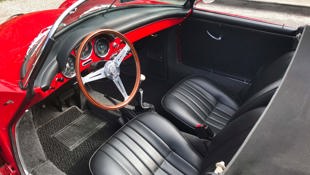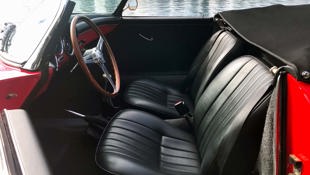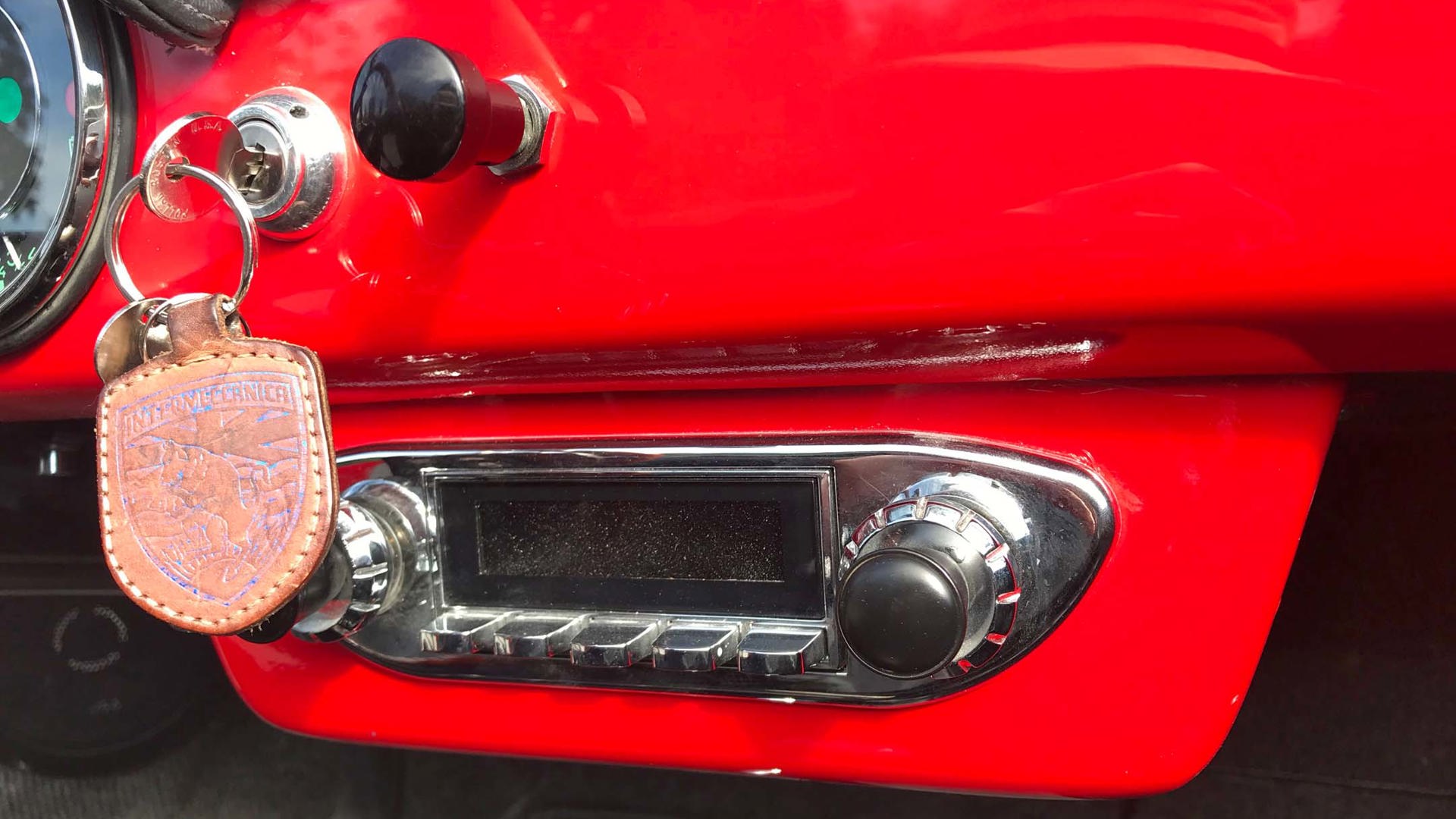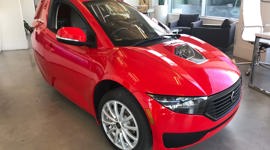VANCOUVER, BC – Intermeccanica has been producing replica Porsche 356 Roadster and Speedster sports cars in Vancouver since 1981 and they’ve established an international following of customers who like the idea of a classic Porsche design combined with a modern drivetrain and modern conveniences. Until now, all Intermeccanica sports cars have been powered by air-cooled Volkswagen or Porsche boxer engines, and more recently, water-cooled Volkswagen or Subaru boxer engines. But with the formation of Intermeccanica’s new electric car division called Electra Meccanica, the company saw an opportunity to fit its retro “D” and “S” roadsters with an all-electric powertrain (in addition to those traditional engines).
While the new Electra Meccanica eRoadster’s basic construction is similar to the Intermeccanica Roadster – a handcrafted boxed steel frame with a one-piece fiberglass body – hidden behind the driver and under the front trunk of the eRoadster are two lithium-ion battery packs making a combined 50 kWh; and behind the driver and passenger, the engine bay holds an electric motor, electronic controller, 12-volt battery, and a single speed (automatic) transmission.
We had an opportunity to drive one of the very first e-Roadster S models around Vancouver’s lovely Stanley Park. With speeds limited to 50 km/h, this was no performance test, but it gave us a good feel for how the eRoadster handles, steers, brakes, shifts, rides, and sounds at urban speeds. As one of the first eRoadsters ever produced, with a retail price of $163,100 (US$124,900), it’s understandable that my driving partner, Electra Meccanica Sales Manager, Geremy Testar, was a little nervous about putting the pedal to the metal.
As you can see, the e-Roadster is a very low car. Getting in requires one of two techniques: put the right foot in first and swivel around while holding onto the steering wheel and falling into the driver’s seat, then pulling the left leg into the car; or just fall backwards into the seat while holding onto the pillar or steering wheel, then swivel both legs around into the footwell. In general, the younger you are, the easier it is to do.
The driver sits very low in the car: at 5'9", I was able to peer over the steering wheel, but shorter drivers may have trouble seeing over the large three-spoke (airbag-free) wheel. Behind the steering wheel, the three round instruments are clearly visible: speedo, tach, and fuel (energy) gauge/temperature gauge. Without an engine, it’s not surprising the tachometer wasn’t working, but plans are afoot to convert it to display real-time revolutions of the electric motor.
Interior ergonomics are, well, like the 1950s. The various knobs on the dash aren’t easy to find or identify and the power window buttons are hidden under the dashboard to the left of the steering wheel. The driver’s seat is not height-adjustable and the steering wheel doesn’t have tilt or telescopic adjustments. However, the cabin is wide and there’s plenty hip room and foot room in the footwell. The bucket seats are comfortable, although they could use a little more lateral support. In keeping with its retro design, there are no head restraints. It’s all part of the charm, right?
On the plus side, the eRoadster is offered with many features you won’t find in a 1950s Porsche: air conditioning, AM/FM radio with wireless Bluetooth, CD player, and USB port, remote keyless entry, power windows, and heated seats.
Turn the ignition key in the centre dash and there’s a slight clicking sound and a red light illuminates on the dash. There’s no engine sound because there’s no engine. Even so, I couldn’t help feeling something was missing. The guttural, barking sound of an air-cooled boxer engine is part of the built-in character of an Intermeccanica Roadster, whereas the eRoadster offers nothing but a muted whine under acceleration and deceleration. Traditional Intermeccanica customers who enjoy the audible and tactile pleasures of a boxer engine probably won’t like it, but they’re probably not the ones who’ll buy this car. A new generation of “green” sports car lovers – who like the eRoadster’s combination of green credentials, quiet running, and retro styling – will probably love it.
To engage Drive, the driver simply presses a button in the middle of the floor shifter knob, and slides the shifter back from Park to Drive. A horizontal digital display in the instrument cluster shows which gear is engaged. Throttle response is immediate. The eRoadster doesn’t hesitate when pulling away from stop lights and accelerates smoothly, quietly, and quickly thanks in part to its one-speed transmission which has no shift points. While some electric cars can be “whiny”, the eRoadster’s electric motor is barely audible.
Weighing just 2,500 lb, the e-Roadster sprints from zero to 100 km/h in 6 seconds, and puts down a maximum 644 lb-ft of torque at the rear wheels, according to the company. I didn’t get the impression the eRoadster had that much punch, but I noticed that the company has a dynamometer in the assembly plant, so they must have tested it.
At speed, the eRoadster’s ride is surprisingly compliant for such a low-slung, hand-built sports car. It absorbs pavement breaks and potholes with a nicely damped thump and the body has virtually no squeaks or rattles. Though it’s low, the eRoadster clears speed bumps with ease.
The eRoadster does not have power steering or power brakes, and the big steering wheel requires some effort when parking or making slow turns. More disappointing is that at-speed steering feel is somewhat vague and there is a surprising amount of play when compared to modern sports cars. To be fair, it is a retro sports car with steering and brakes more in keeping with its 1950s character.
Though it doesn’t have power brakes, it does have regenerative braking which creates a slight braking effect when the accelerator pedal is released. The eRoadster will slow down slowly without braking at slower speeds, but at higher speeds, the driver needs to give the brake pedal a firm push.
The eRoadster feels well planted in the curves, though I wasn’t able to drive fast enough to give it a true test. With the top down at speed, there is some wind buffeting behind the head, but less than I expected in a car with a low windshield and the side windows down.
The e-Roadster’s manually operated fabric top lifts easily into place and is secured with two small clips which proved a bit fidgety to attach to the windshield header. With practice, this would probably get easier. With the top up, visibility to the rear is restricted by a small rear plastic window and the lack of rear side windows, much like the original 356. But I expect the eRoadster won’t be a daily commuter and most owners will be driving on weekends with the top down!
With the top lowered, a fabric tonneau cover snaps into place to keep the lowered top free of dust and improve the overall appearance.
To charge the eRoadster’s 50 kWh lithium-ion battery, a standard J1772 connector can be plugged into a socket behind the licence plate. Using a 220–240-volt (Level 2) charger, the eRoadster can be fully charged from empty in about nine hours. The e-Roadster has a driving range of up to 250 kilometres, according to the company.
With an MSRP of $163,100 (US$124,900), the Electra Meccanica eRoadster S is more than twice the price of a gas-engine Intermeccanica model. That may be the price of exclusivity. There’s a good chance you’ll be the only one on your block with a limited production, hand-built, retro-styled electric Porsche 356 replica.
